Сообщение The Reindeer operation: a story behind WW2 photo, 1941 появились сначала на Old Pictures.
]]>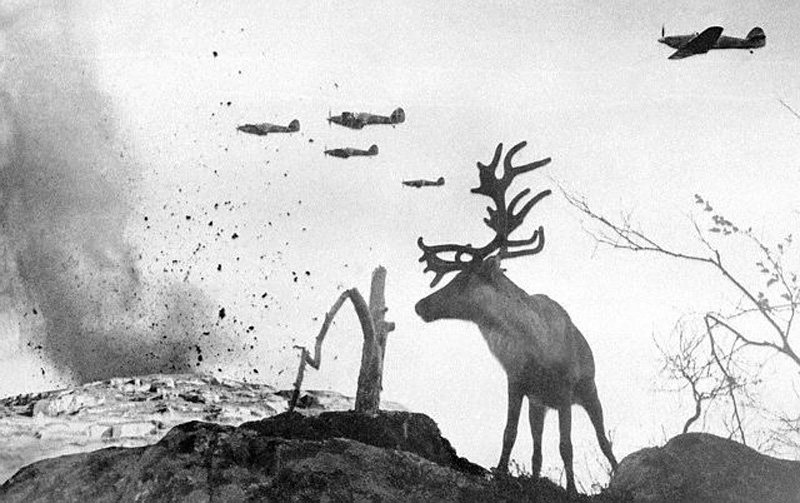 The name of this photo is Reindeer, called after the German operation during the WW2. This offensive aimed to capture Petsamo (an area in Finland on the border with the Soviet Union) to seize nickel mines. The Reindeer operation started on June 22, 1941, and proceeded without incident. On June 29, the German plan changed, and the whole operation was renamed to ‘Platinum Fox.’ The new goal was the city of Murmansk. The Soviet Photojournalist Yevgeny Khaldey was covering the Russian defense activities. It was a time when he made this striking shot in which the beast’s natural beauty confronts the killing machines.
The name of this photo is Reindeer, called after the German operation during the WW2. This offensive aimed to capture Petsamo (an area in Finland on the border with the Soviet Union) to seize nickel mines. The Reindeer operation started on June 22, 1941, and proceeded without incident. On June 29, the German plan changed, and the whole operation was renamed to ‘Platinum Fox.’ The new goal was the city of Murmansk. The Soviet Photojournalist Yevgeny Khaldey was covering the Russian defense activities. It was a time when he made this striking shot in which the beast’s natural beauty confronts the killing machines.
The Reindeer is not the only famous photo that Yevgeny Khaldey took. The best-known picture is, of course, the Flag over the Reichstag, 1945. The ‘Flag’ picture hit the Top 100 most important photos in history.
Oldpics also published a story behind another amazing photo by Yevgeny Khaldey: The Nazi family in Vienna, 1945.
How the reindeer appeared in the combat operation photo
But now, let’s get back to the Reindeer operation photo. In his works, Yevgeny Khaldei liked to combine everyday life and war. He photographed a sunbathing couple next to a destroyed building, the head of the traffic control service next to the sign of German cities in Russian, etc. He used a similar technique with the Reindeer photo. True, the photo with the reindeer was not entirely documentary. The book “Witness to History: Photos by Yevgeny Khaldei” tells about this shot. During the bombardment, the deer (Russian called it Yasha afterward) approached soldiers. The shell-shocked animal did not want to be left alone. Khaldei took a picture, but it turned out not as spectacular as the correspondent expected. Through multiple exposures, Khaldei added British Hawker Hurricane fighters and an exploding bomb to the shot.
The Reindeer operation did not bring success to the German-Finnish army. Neither the Germans nor the Finns reached the Murmansk railway, nor did they seize the Soviet fleet’s base in the Far North. In this sector of the war, the front stabilized until 1942.
Check our publications of the best Soviet WW2 photography:
Outstanding Soviet WW2 pictures (Part I: Max Alpert)
Amazing Soviet WWII pictures (Part 2: Dmitri Baltermants)
Outstanding WW2 pictures (Part3: Emmanuil Evzerikhin)
Сообщение The Reindeer operation: a story behind WW2 photo, 1941 появились сначала на Old Pictures.
]]>Сообщение Outstanding WW2 pictures (Part3: Emmanuil Evzerikhin) появились сначала на Old Pictures.
]]>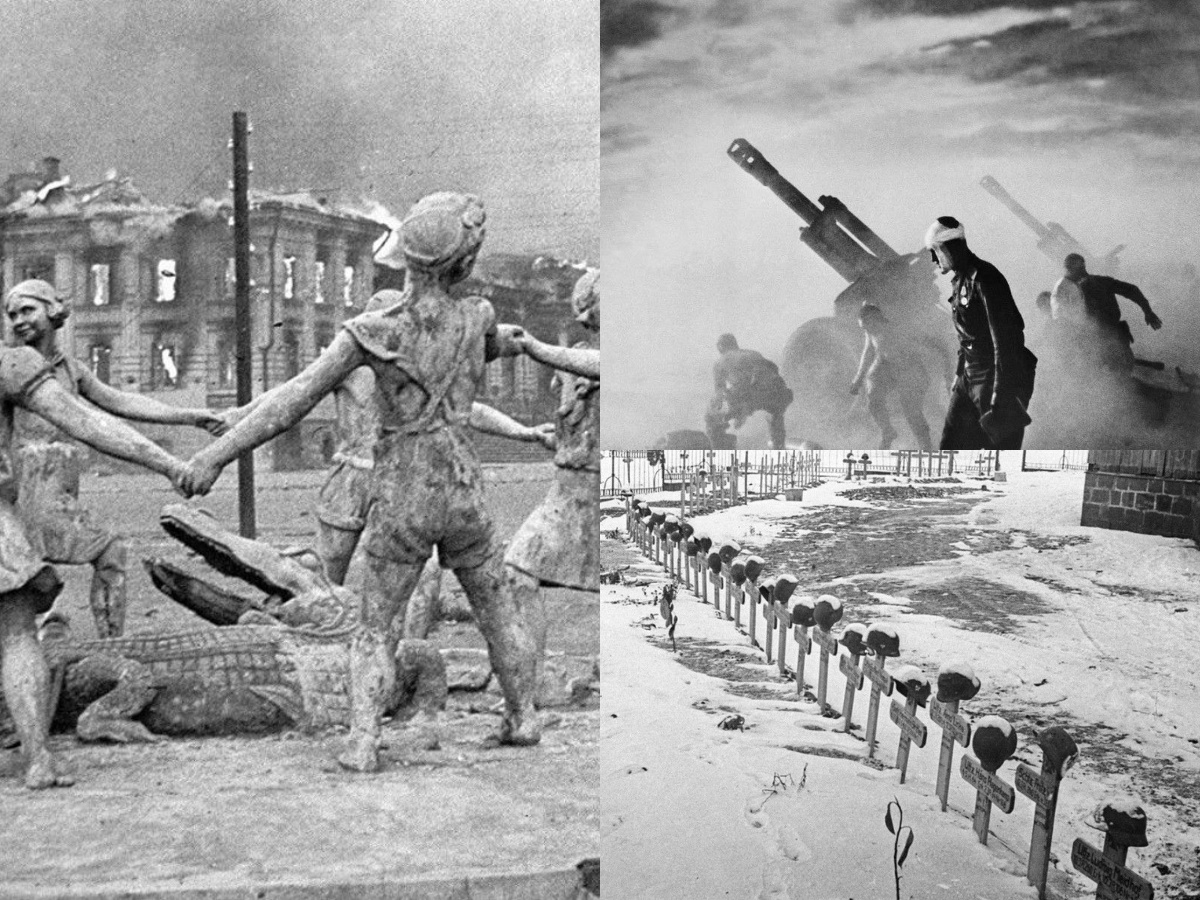 Oldpics continues to publish the most amazing WW2 pictures made by the Soviet photographers. It’s the third volume of this series.
Oldpics continues to publish the most amazing WW2 pictures made by the Soviet photographers. It’s the third volume of this series.
Here you can check previous publications:
Outstanding Soviet WW2 pictures (Part I: Max Alpert)
Outstanding Soviet WWII pictures (Part 2: Dmitri Baltermants)
Now let’s take a look at WW2 pictures of Emmanuil Evzerikhin. He has some iconic world-famous photography in his portfolio too. We mean his photo of a fountain with dancing figures of children in the middle of ruined Stalingrad. This image became another gloomy symbol of WW2. Yevzerikhin’s scenes are generally atypical. Yes, there are many masterful combat photographs, but when selecting the brightest ones, you will pay attention to their symbolism, meaningfulness, whether it’s the cemetery of Hitler’s soldiers in liberated Stalingrad or the aircraft resembling a huge corn cob.
The road to combat photography
There was a lack of photo reporters in the USSR when WW2 broke out. Here’s how TASS (Russian version of AP) invited Emmanuil Evzerikhin to shoot war chronicles for them. He went through the entire war, filming many significant historical events. During the Battle of Stalingrad, Emmanuil became a real photo poet, as photo colleagues called him.
The Stalingrad series of photographs by Evzerikhin became the master’s visiting card; simple and expressive scenes grabbed editors’ attention and hit the print uncountable times.
Evzerikhin captured the real, hungry, and destroyed the city of Stalingrad and its people. Panoramas of a burning city with “blinded” windows of houses; the frightening emptiness of extinct streets; Pictures of captured Germans are with despair in their eyes. Those WW2 pictures make you empathize with people who have become victims of the war. Frozen, miserable, wrapped in rags, and lined up in uneven ranks. The soldiers wander through the white snow to nowhere, their faces and figures leave only the feeling of the monstrosity of any war.
Emmanuil Evzerikhin participated in the Battle of Konigsberg, the liberation of Minsk. He filmed the battles of the cities of Poland and Czechoslovakia, including the bloody Prague operation.
Read more: 100 most important pictures in history
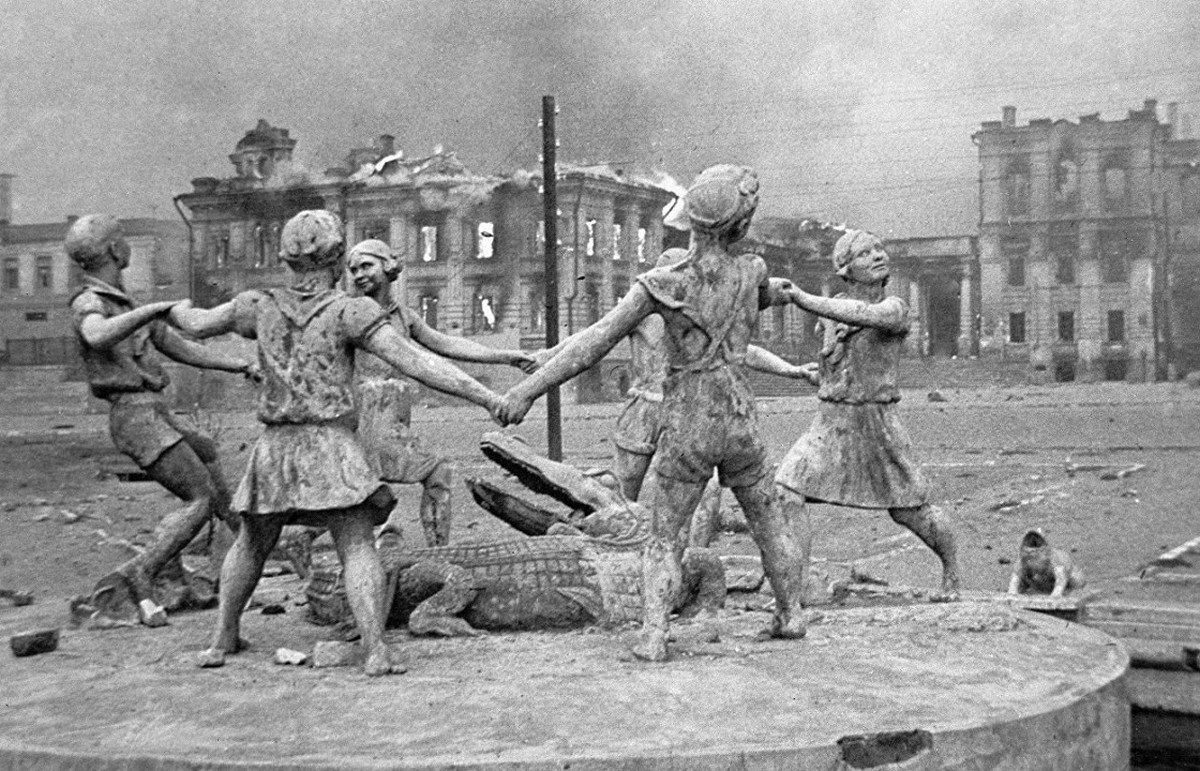
Fountain Children’s round dance in Stalingrad after the raid of German aircraft, 1943
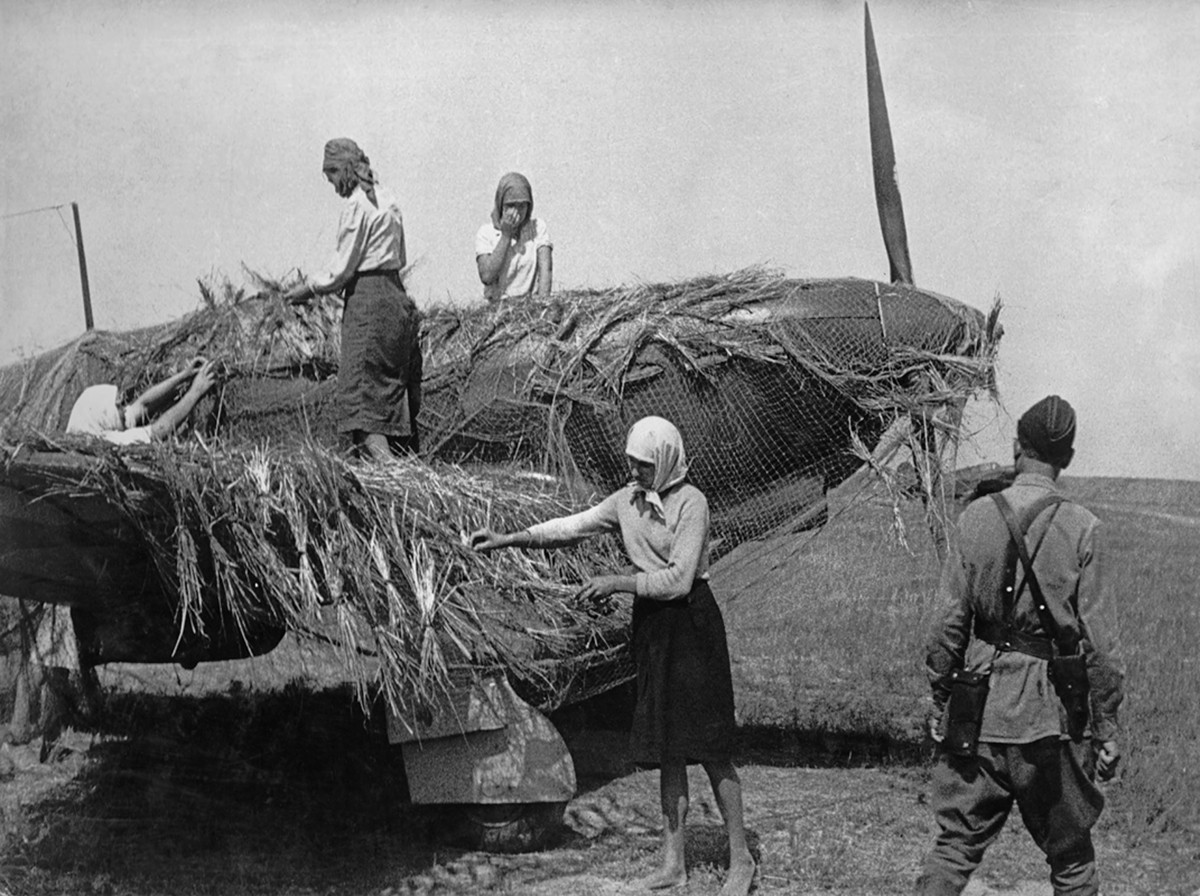
Women camouflage the Soviet Yak-1 fighter at the airfield (1941)
Boeing factory disguised during WWII in pictures
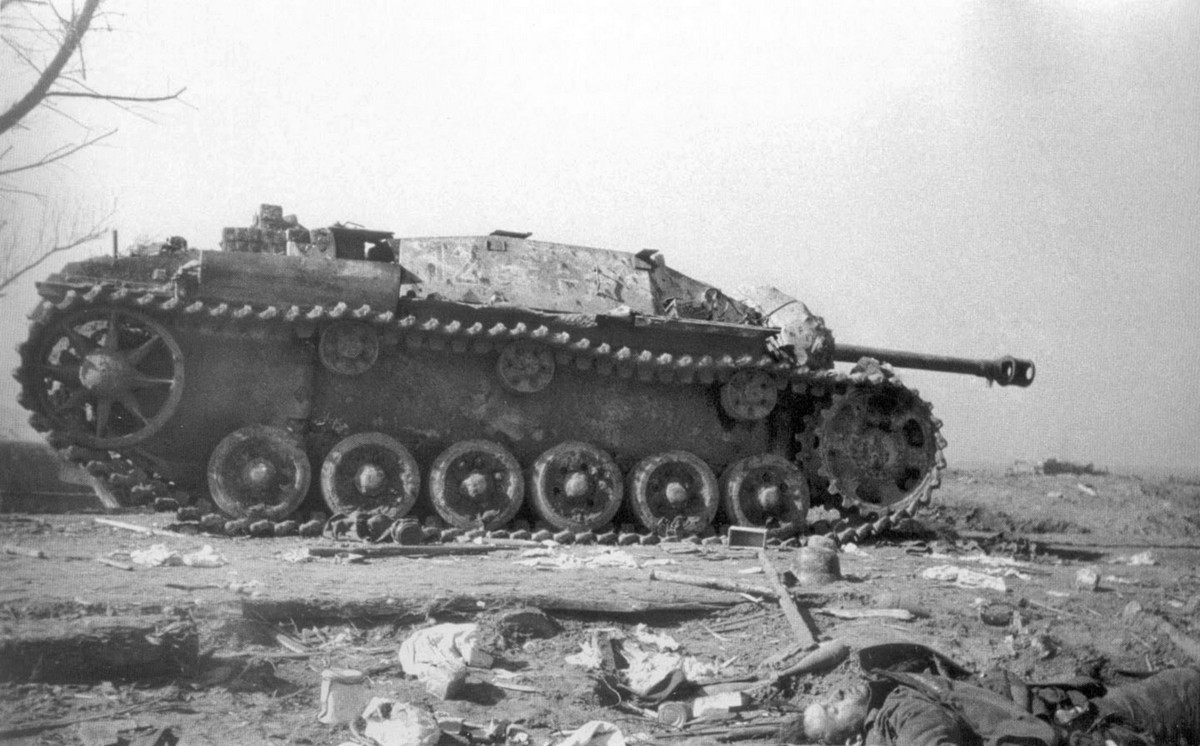
The StuG III assault gun knocked out in Konigsberg and the killed German soldier. Germany (1945)
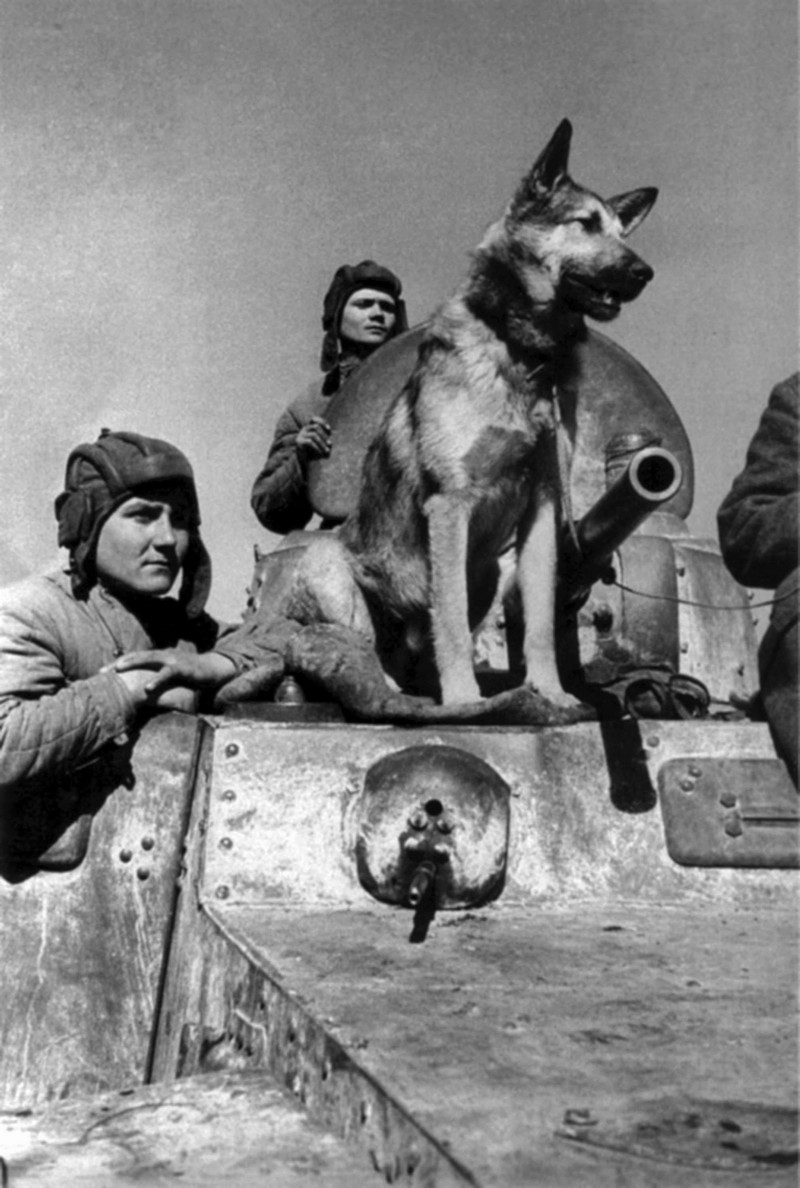
The crew of the BA-10 armored car with a shepherd
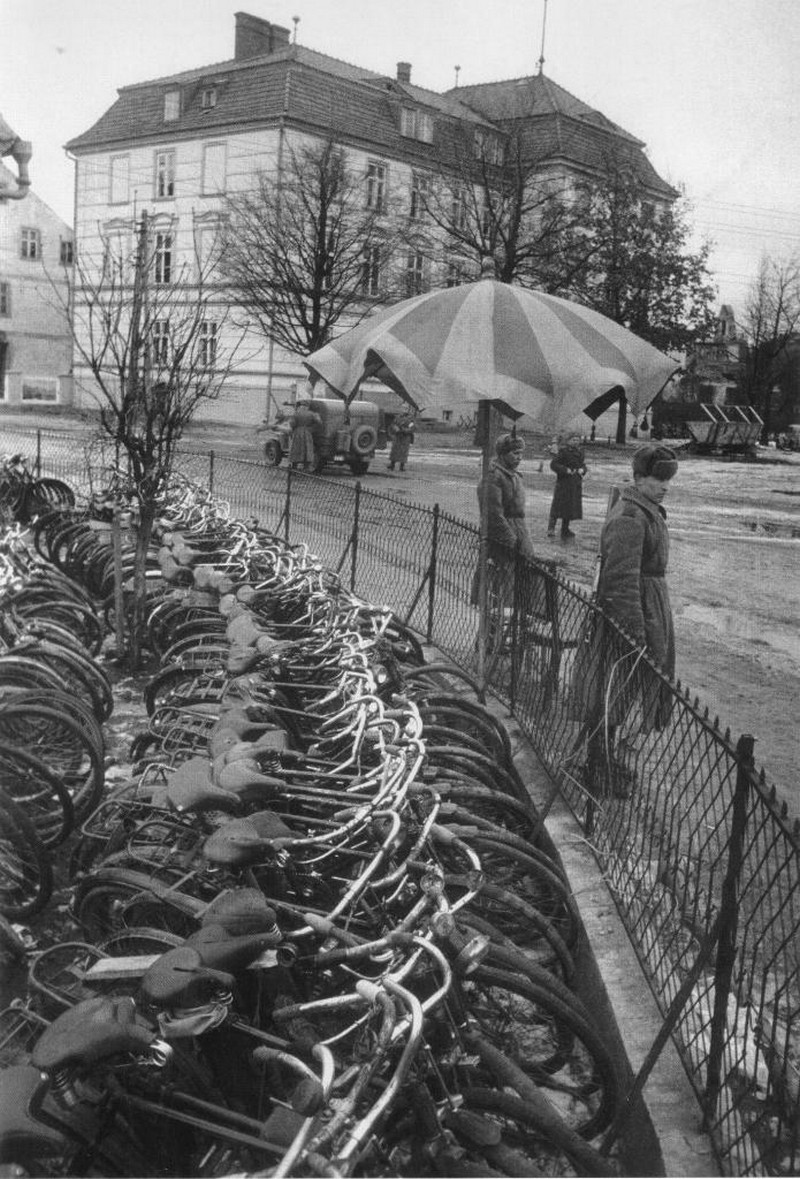
Soviet collection point for captured bicycles in the city of Bischofsburg. Poland (1944)
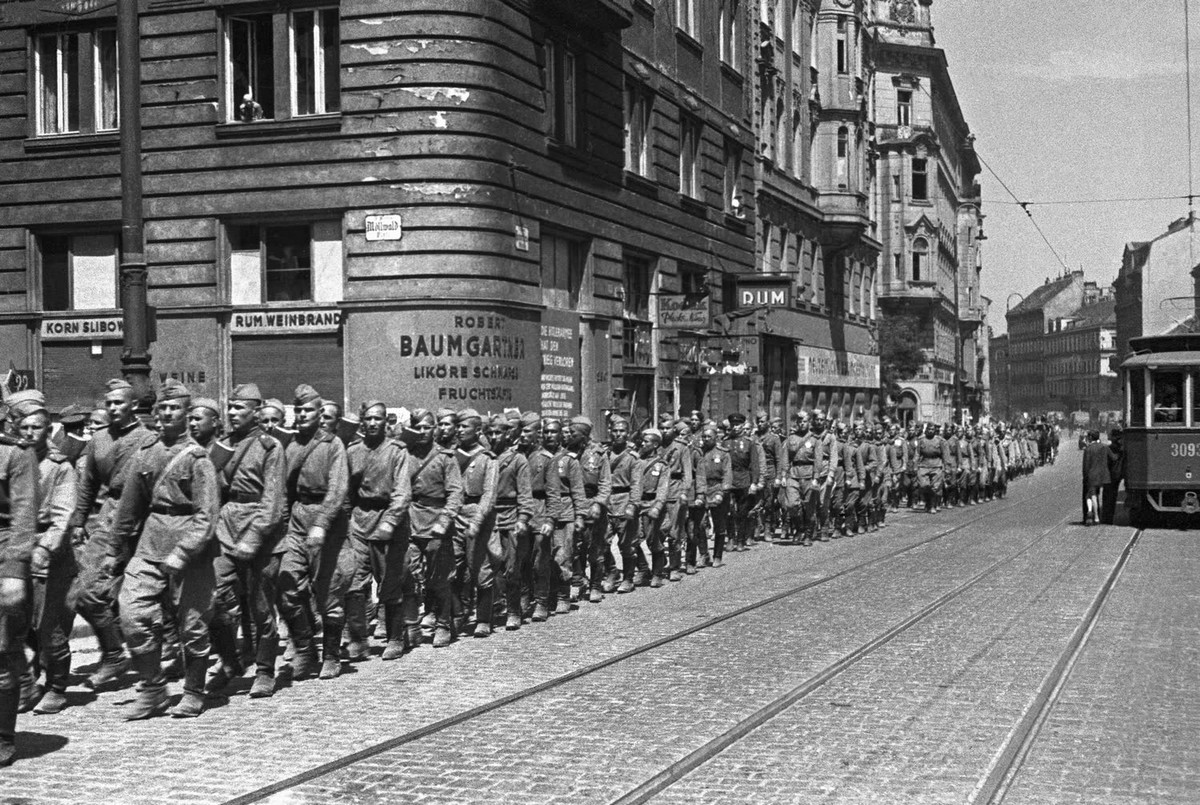
Red Army soldiers march at the Favoritenstrasse in Vienna (1945)
Read more: Vienna in 1945: Noteworthy pictures from soviet archives
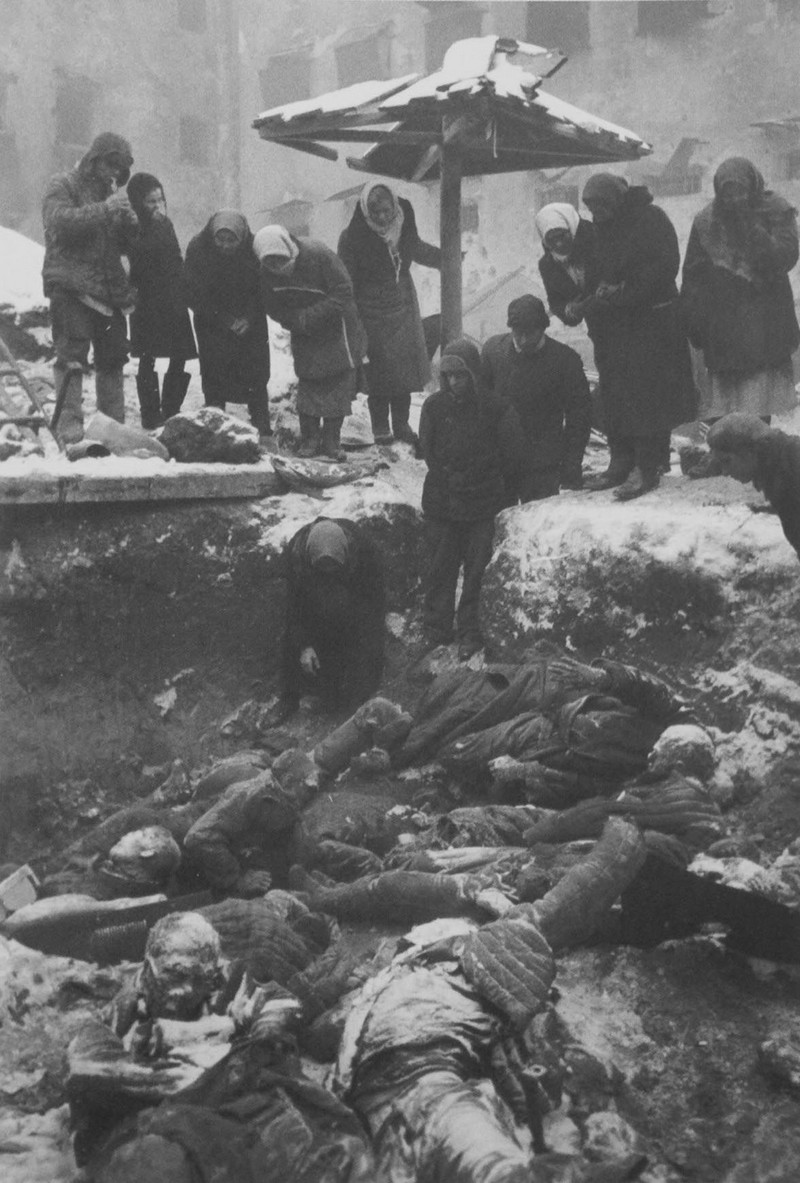
People of Rostov-on-Don in the courtyard of the prison identify relatives killed by the German army (1943)
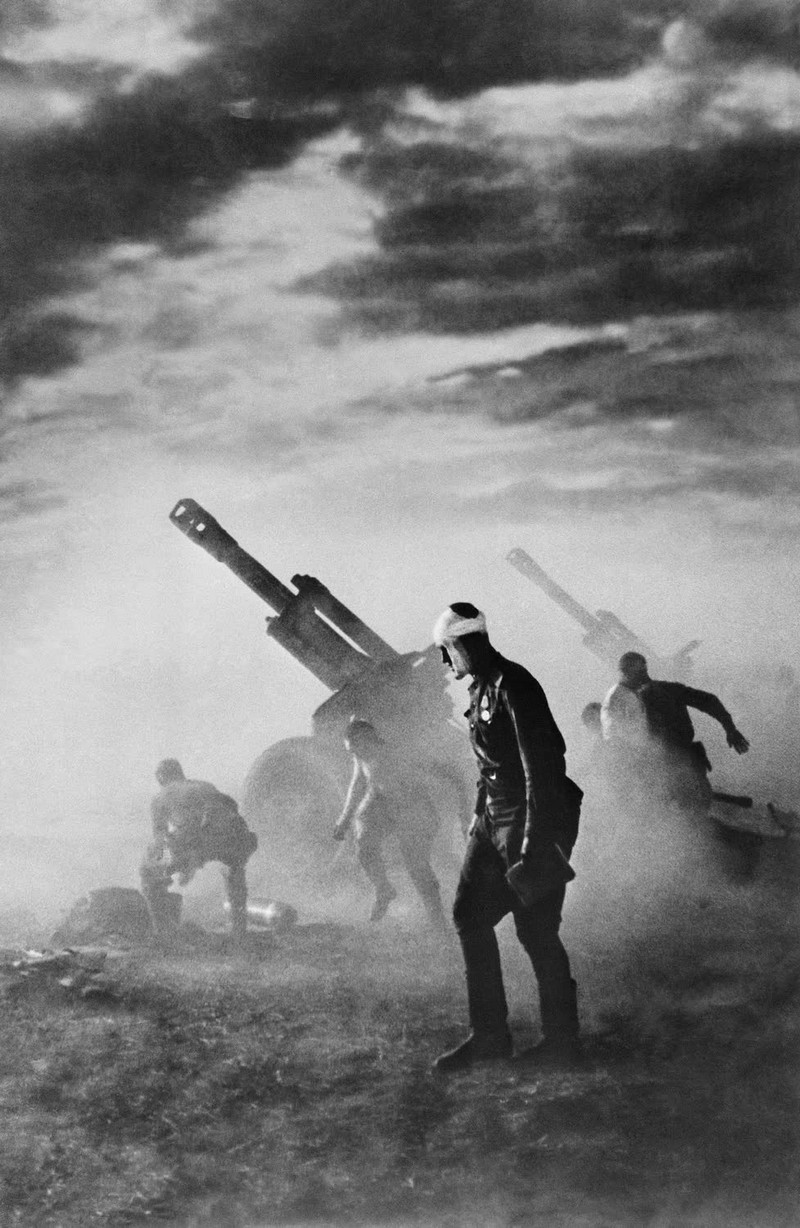
Battery of Soviet 152-mm D-1 howitzers firing at German troops in Belarus (1944)
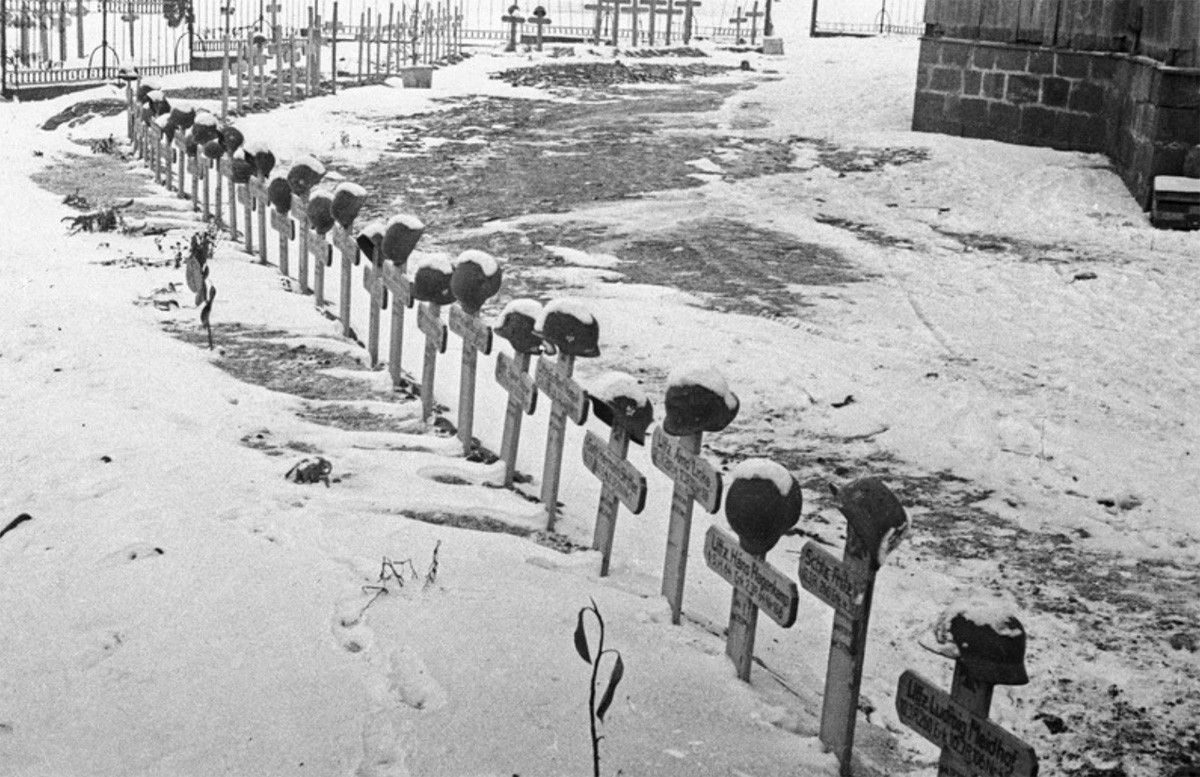
German cemetery in a village near Stalingrad (1942)
Сообщение Outstanding WW2 pictures (Part3: Emmanuil Evzerikhin) появились сначала на Old Pictures.
]]>Сообщение Outstanding Soviet WWII pictures (Part 2: Dmitri Baltermants) появились сначала на Old Pictures.
]]>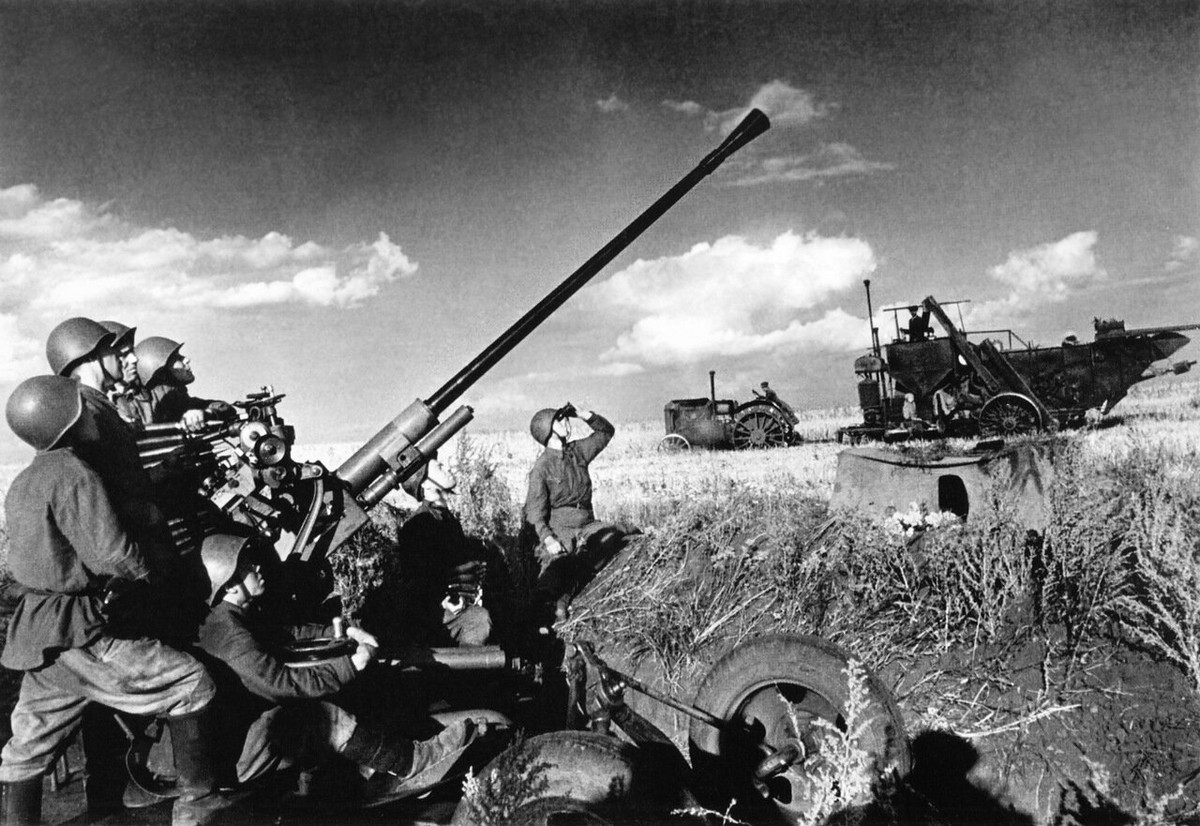
Cleaning the area, protecting the harvest, 1941
Oldpics continues its series of the noteworthy WWII pictures by the soviet photographers.
Outstanding Soviet WW2 pictures (Part I: Max Alpert)
Outstanding WW2 pictures (Part3: Emmanuil Evzerikhin)
This time we cover the combat photography of Poland-born Dmitri Baltermants. His WW2 photo ‘Grief’ featured in the Top 100 most important pictures in history.
Dmitri Baltermants joined the Red Army (as a photo reporter of the Izvestia newspaper) during the first days of the war. His units were directed to Crimea, where the photographer witnessed a total defeat and retreat of the Soviet forces. He successfully dodged the encirclement and relocated to the capital, and here’s how he participated in the Battle of Moscow.
Editorial mistake as a life tragedy
Izvestia newspaper published numerous WWII pictures by Dmitri Baltermants. It printed his reports on the construction of anti-tank fortifications near Moscow, the defense of the capital, military operations in the Crimea, and Stalingrad’s battle.
His pictures from the Battle of Stalingrad played a tragic role in Dmitri’s life. He experienced the totalistic repression machine in 1942 when his photos got to print with a mistaken caption. It was a newspaper editor’s mistake, who mistook the demolished British Lend-Lease tanks for German ones. Dmitry Baltermants was not present when selecting a picture. Nonetheless, the editor sifted the blame on the photographer. The punishment for such a human factor mistake in Soviet Russia was painful.
Baltermants was sent to the so-called ‘doomed battalion.’ The soldiers of such ‘doomed battalion’ participated in the hottest fights and served as cannon meat. Statistically speaking, Dmitri Baltermants should have ended up his days during this punishment. Against all the odds, the photographer survived. Baltermants was wounded and joined the Red Army again after the recuperation, as a photographer, at this time.
Our best WWII pictures publications:
WW2 Pacific battles in pictures by W Eugene Smith
The Story of The Flag Raising on Iwo Jima by Joe Rosenthal (1945)
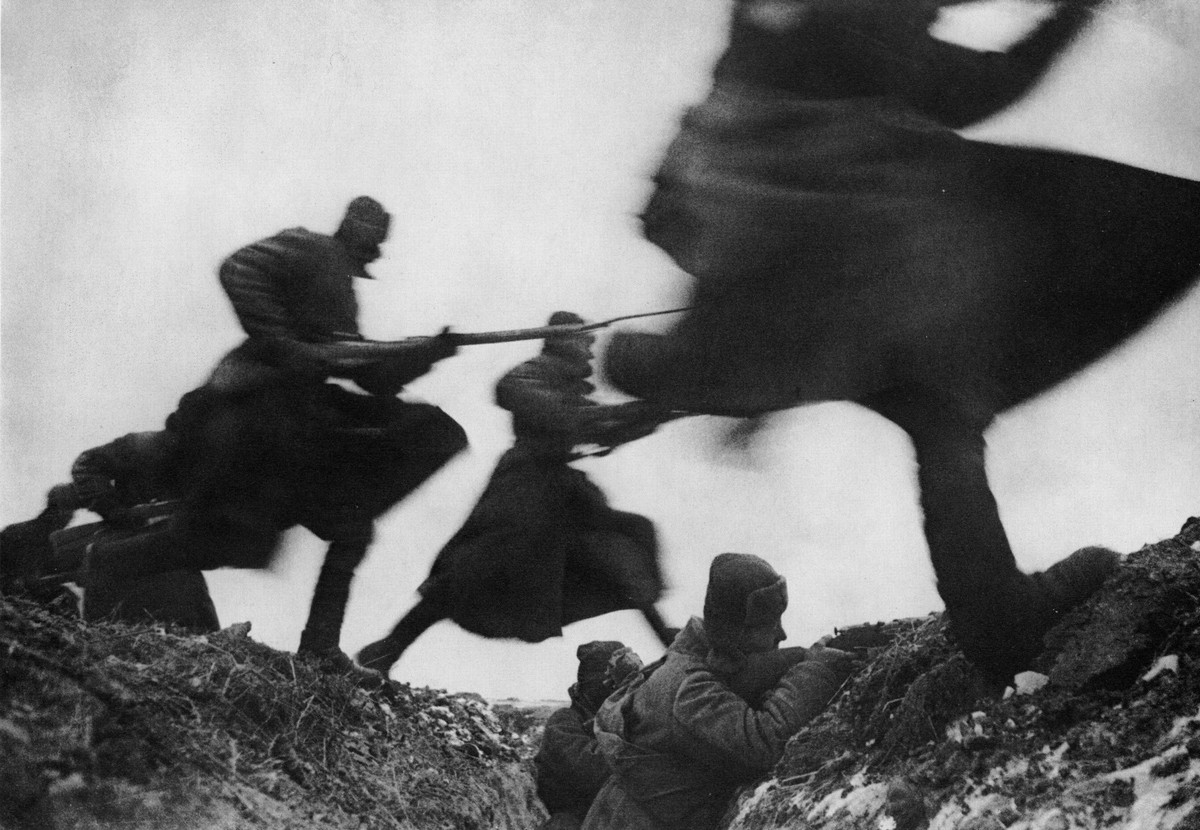
During an attack, 1941
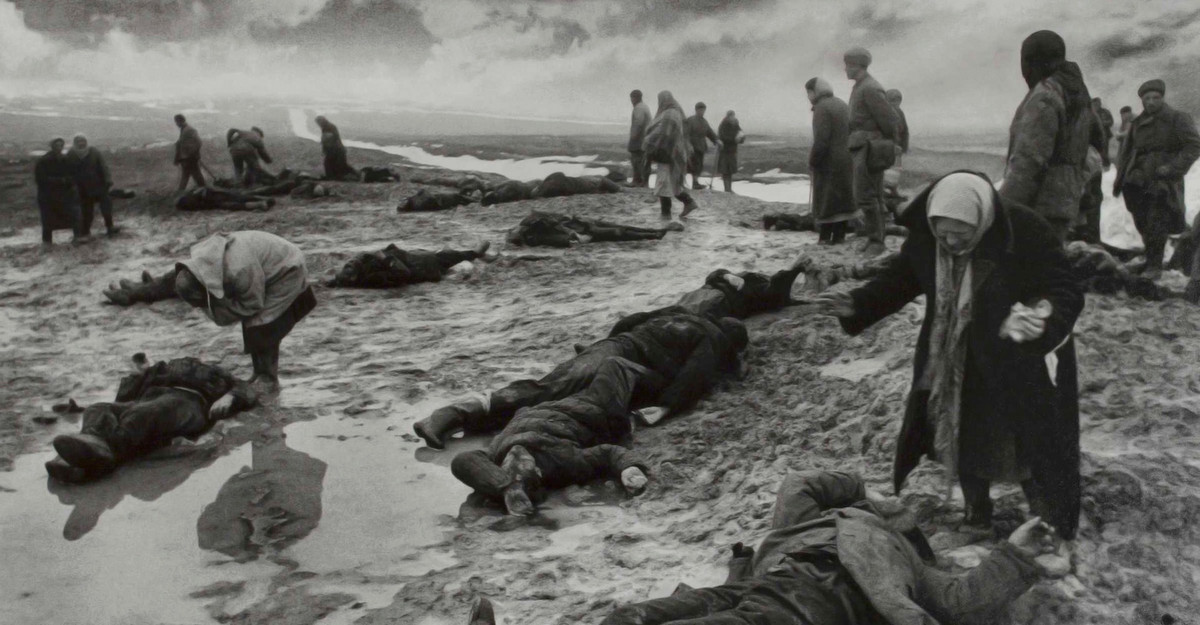
‘The Grief.’ One of the best-known WWII pictures by Dmitri Baltermants.
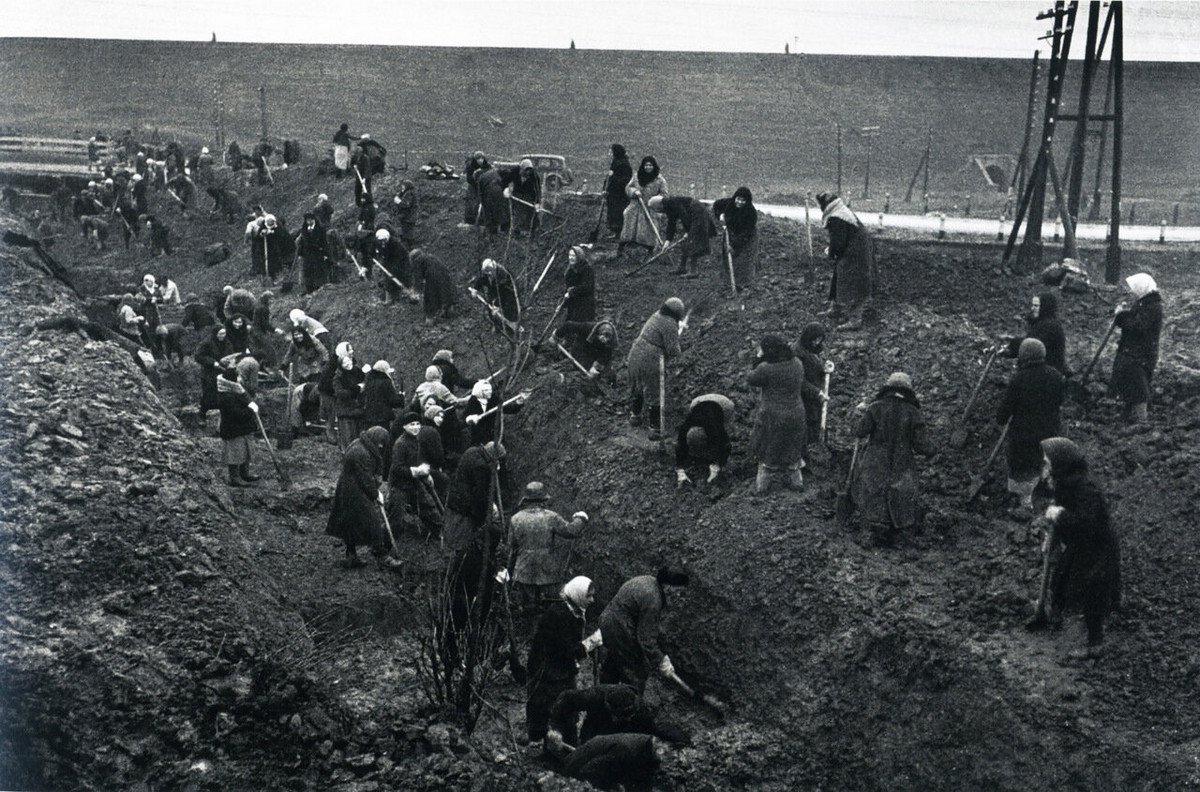
People digging anti-tank barriers, the Battle of Moscow, 1941

Cleaning the area, protecting the harvest, 1941
Note the agriculture vehicles on the background. It was August of 1941, and the Nazi army defeated the Soviets almost everywhere. While retreating to the East, Russians tried to take as much harvest as possible to avoid the famine. In this picture, the anti-air cannon is checking the skies to let the farmers do their job.
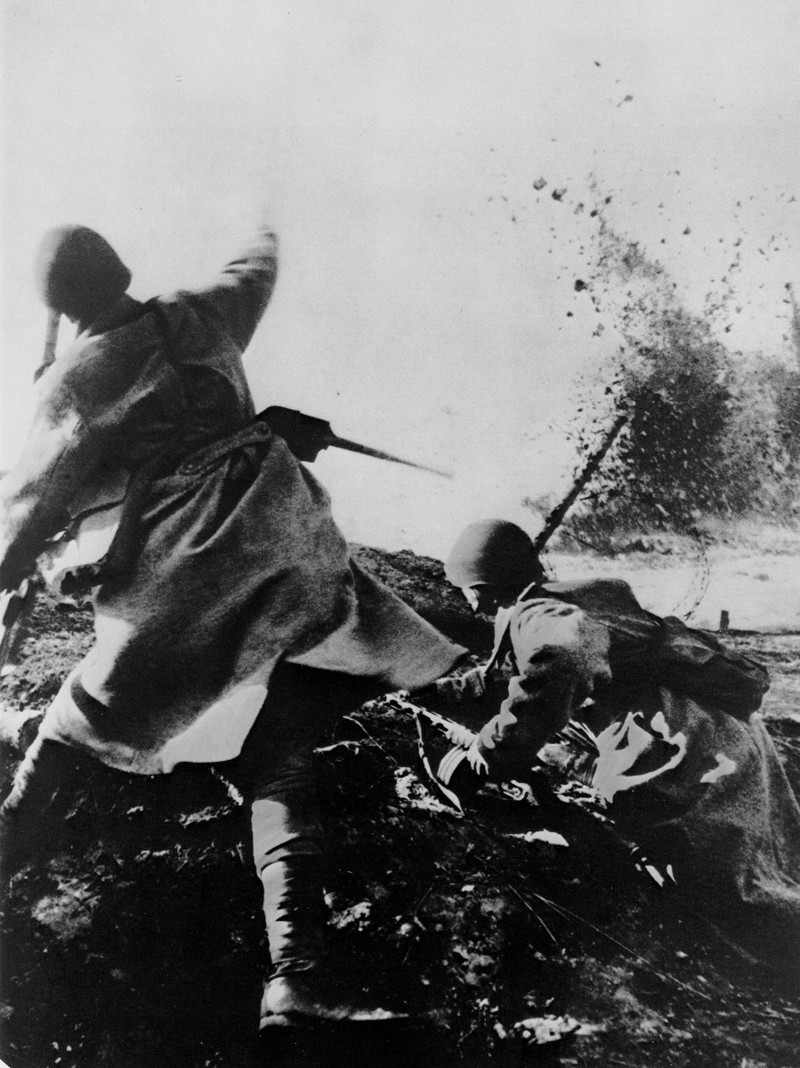
Close-quarters combat. Battle of Moscow, 1941.
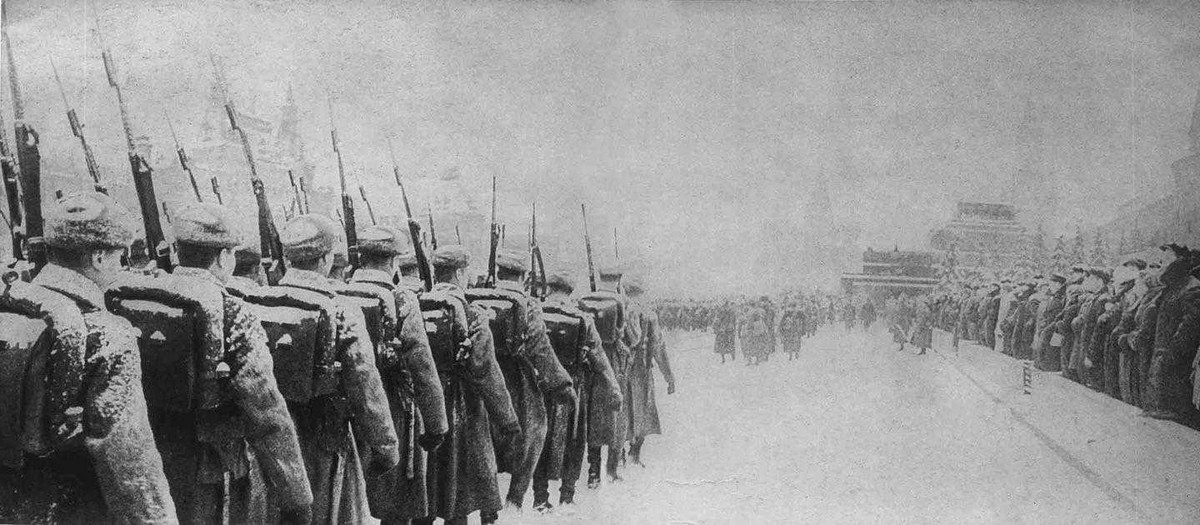
Parade in Moscow, November 7, 1941
It’s hard to imagine how desperate was the war situation for the Soviets in November of 1941. Germans units directed to the Russian capital and the Battle of Moscow was about to start. Stalin decided to keep the Army Parade at the Red Square on November 7, as it used to be years before. This act boosted the morale of the city defenders and helped to win that battle.
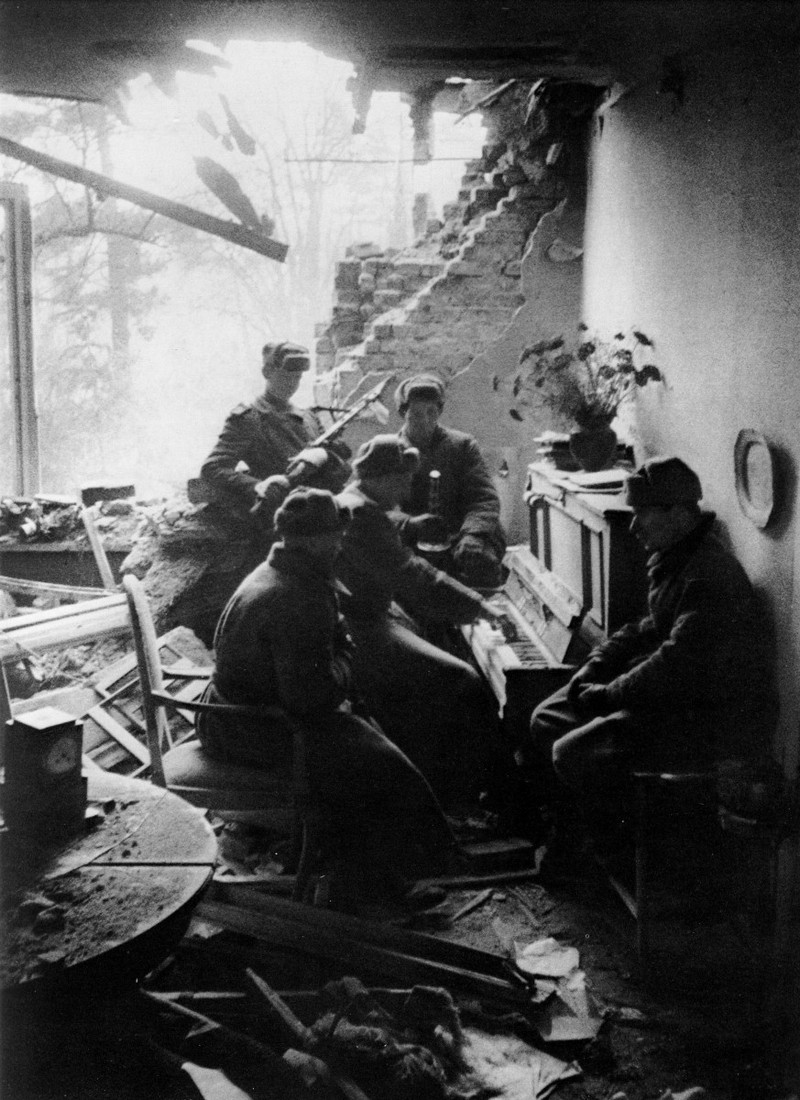
Soviet soldiers playing the piano in a destroyed building in Germany, 1945
Сообщение Outstanding Soviet WWII pictures (Part 2: Dmitri Baltermants) появились сначала на Old Pictures.
]]>Сообщение Outstanding Soviet WW2 pictures (Part I: Max Alpert) появились сначала на Old Pictures.
]]>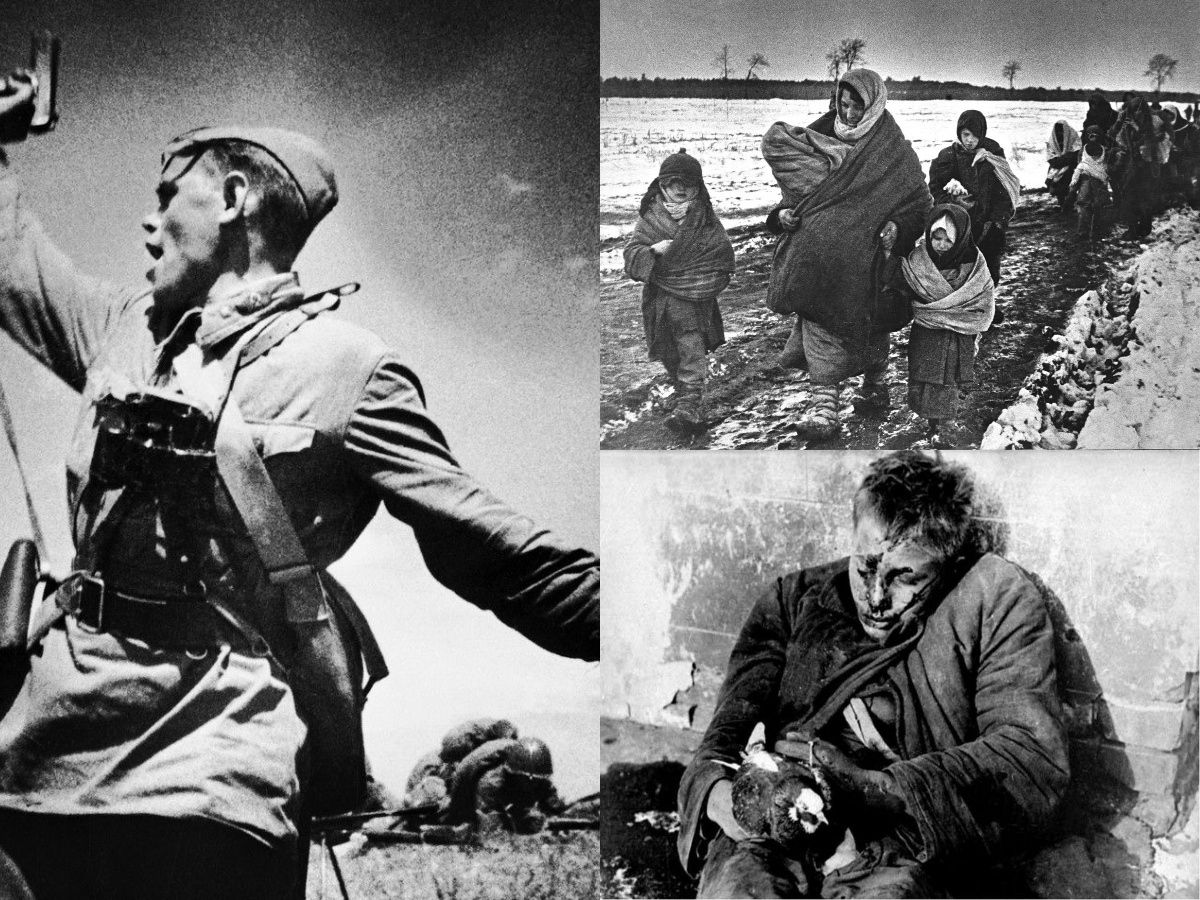 You could find a lot of excellent historical WW2 pictures on the pages of Oldpics. We’ve covered WW2 Pacific Battles, iconic photos of Iwo Jima, and V-J day. But we published not so many combat photography from the Russian side. That’s not fair, and we decided to fix it.
You could find a lot of excellent historical WW2 pictures on the pages of Oldpics. We’ve covered WW2 Pacific Battles, iconic photos of Iwo Jima, and V-J day. But we published not so many combat photography from the Russian side. That’s not fair, and we decided to fix it.
Outstanding WW2 pictures (Part3: Emmanuil Evzerikhin)
Outstanding Soviet WWII pictures (Part 2: Dmitri Baltermants)
Oldpics has selected several outstanding soviet photographers whos WW2 pictures are 100% noteworthy. We are starting a series of publications, where each of them will feature pictures made by one of those cameramen.
We start this series with Max Alpert’s photos. You may know his iconic ‘Combat’ picture, but now you’ll see more of his works.
‘Combat’ and other glorious WW2 pictures
Max Alpert received three orders and several medals for his WW2 pictures. Working both in the front trenches and in the liberated territories, he created several of the era’s most important photographic documents. According to critics (and it is difficult to disagree with them), Max Alpert could be an integral part of the historical photography if he took only his “Combat” photo.
Read more: 100 most important pictures in history
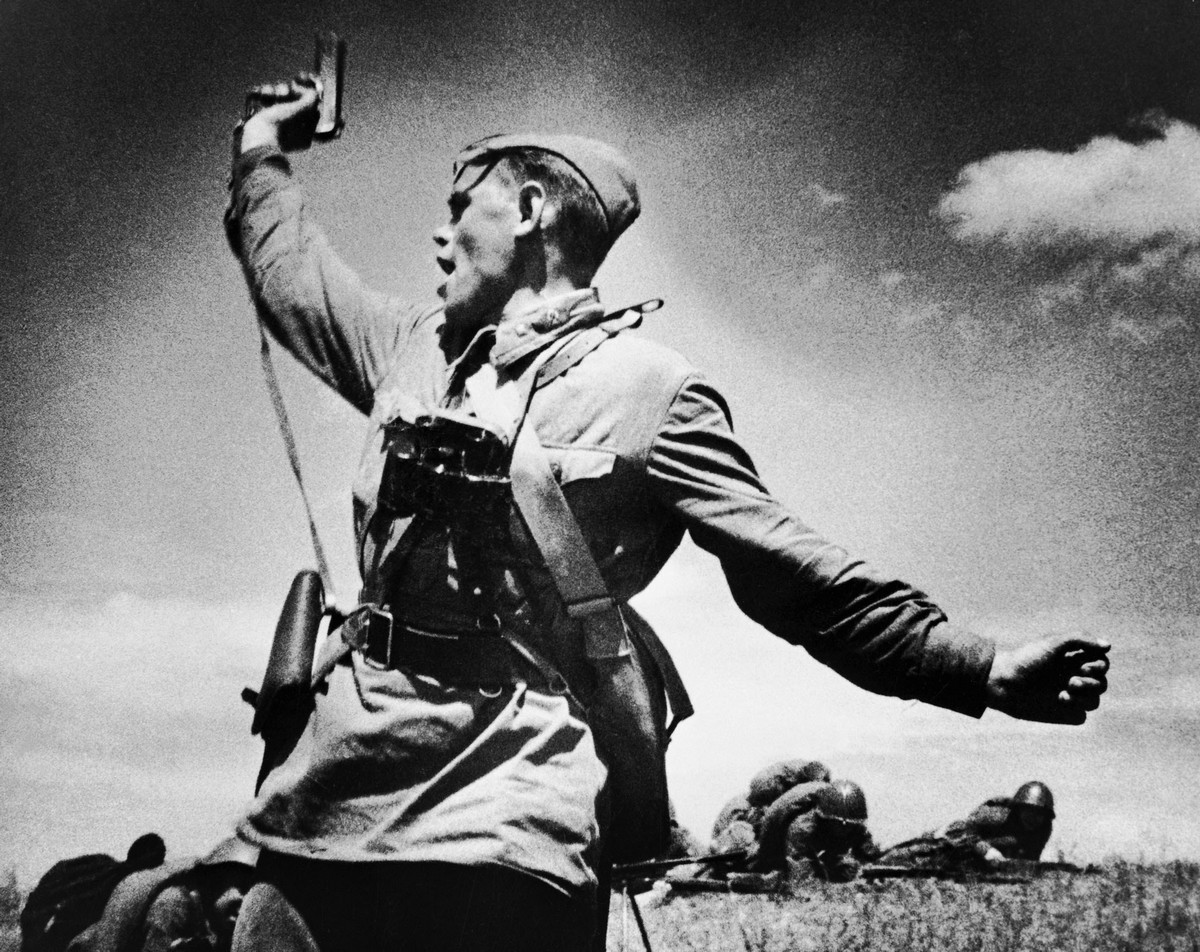
‘Combat’ literally means ‘Commander of the Batallion.’ It is noteworthy that this image resembles the style of the best works of Max Alpert from the pre-war period. The energetic figure of a commander in the foreground, the endless sky, and the earth’s edge. It seems like soldiers figures lying in the distance are pressed, demonstrates a person’s readiness to stand on the brink between life and death. The truth is that this ‘Combat’ died in several minutes after Alpert captured this picture.
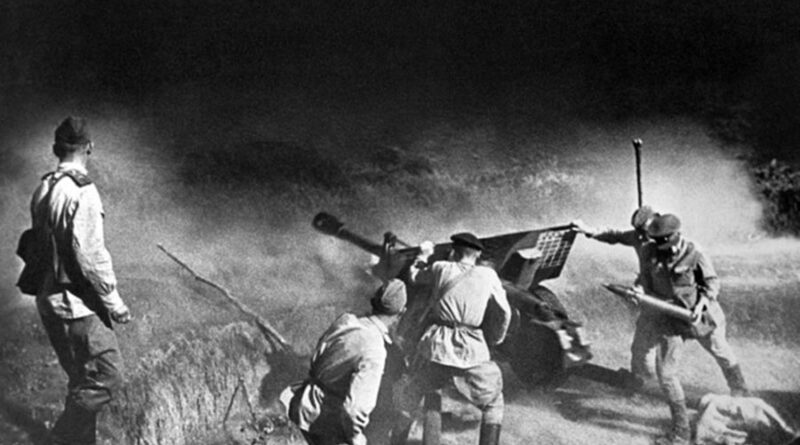
The ‘Artillery squad’ is another noteworthy photograph of Max Alpert. The weapon becomes the center point of the composition. The light is coming from the back, and the darkness swirling right behind the edge of the barrel adjoin. Most likely, Max Alpert retouched this image to enhance the contrasting opposition of light and darkness. This photo is not just a combat photograph. It’s a piece of art that reveals the supreme truth of the war, far beyond the reliability of its individual episode.
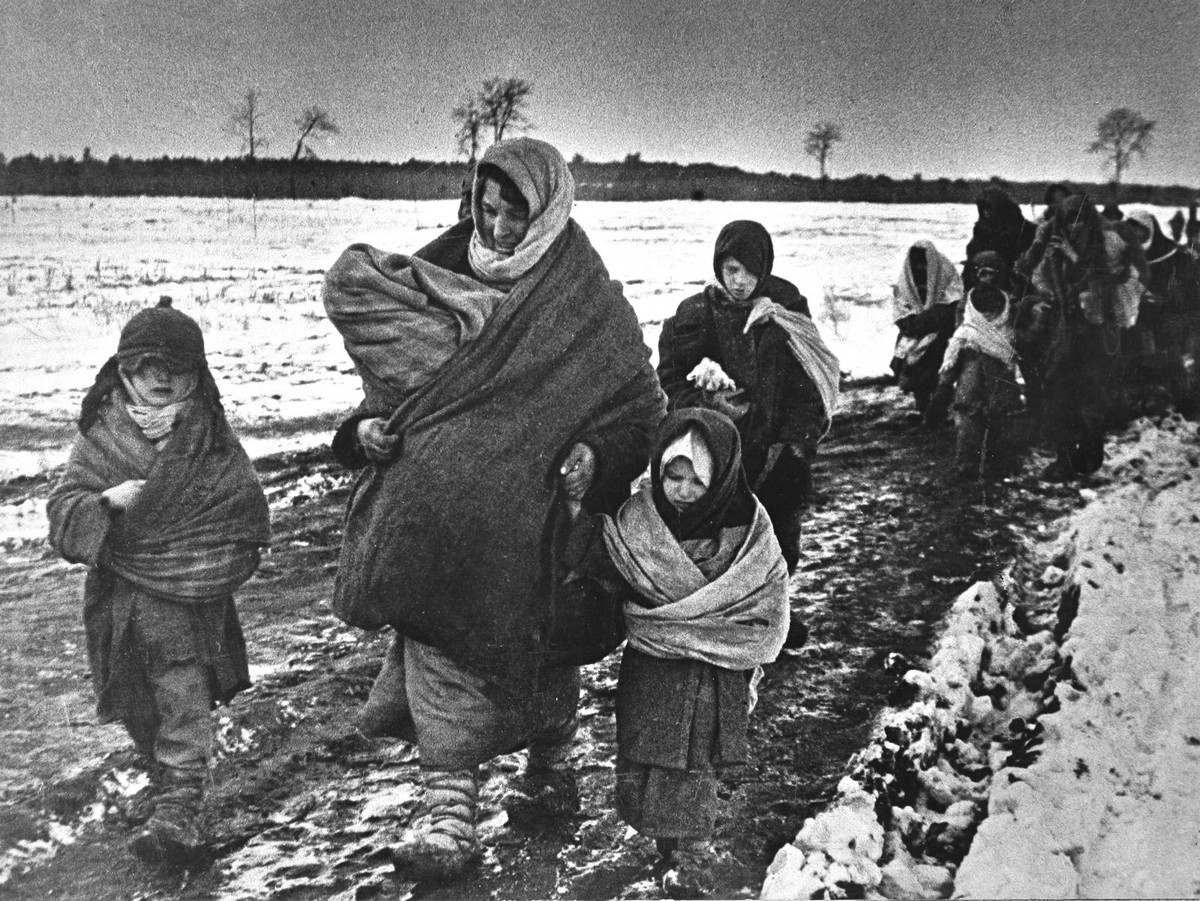
“On the Roads of War” belongs to the best-known WW2 pictures in Russia. A group of refugees wandering along a muddy winter road. A woman with two children stands out in the foreground. The feeling of human grief is multiplied by the “point of view” found by the photographer. The military routine grows into a symbol of the four years of suffering of the Soviet people.
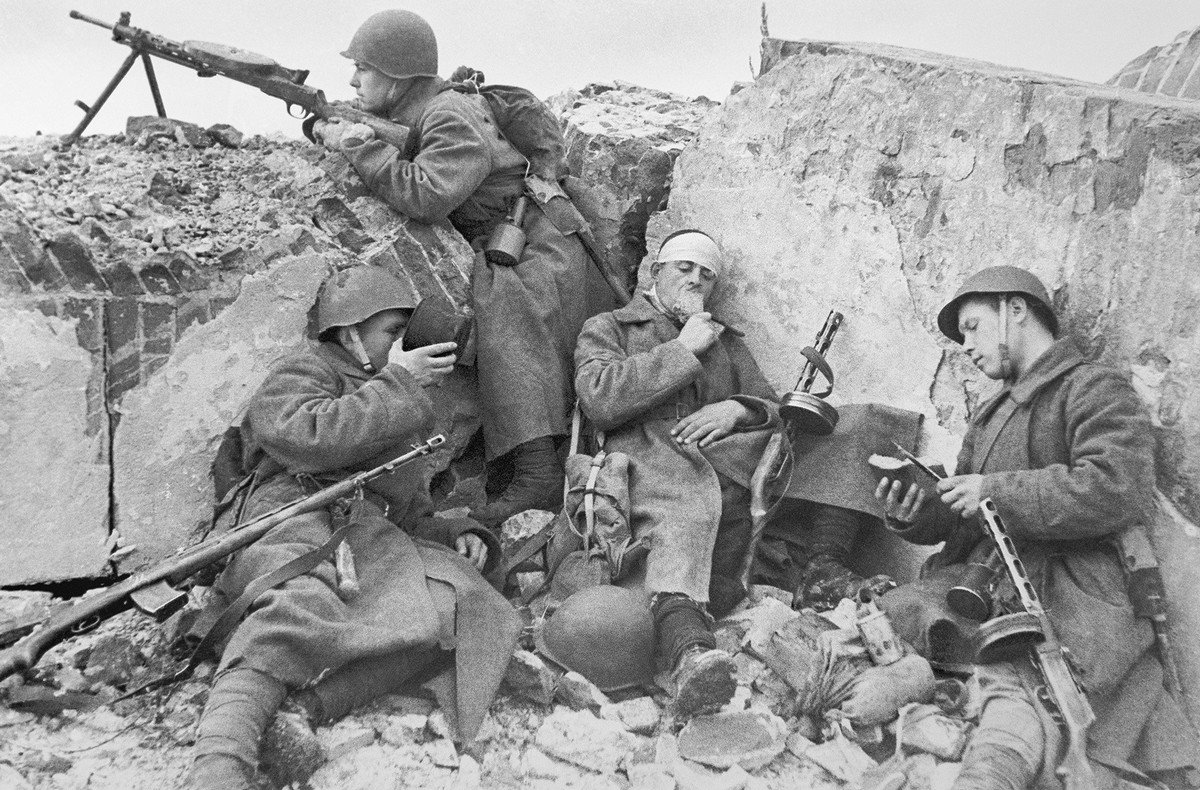
A brief moment of silence during the close-quarters combat. The Battle of Stalingrad, 1942
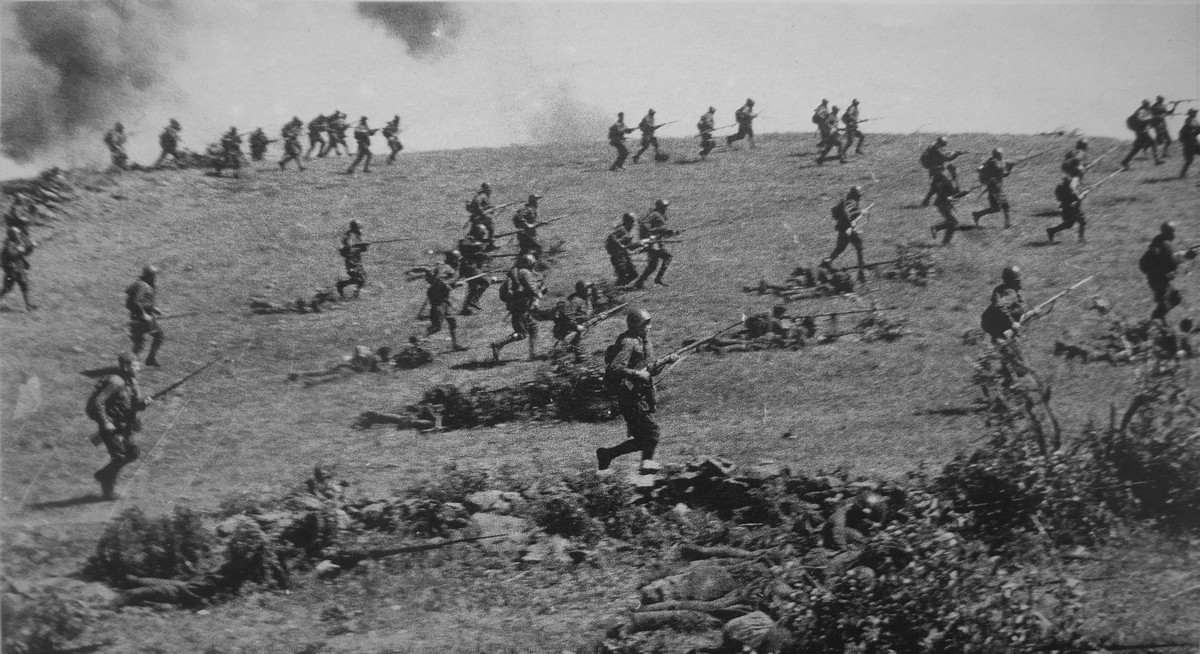
Soviet infantry during an attack. Somewhere during the operation of Rjev, 1942
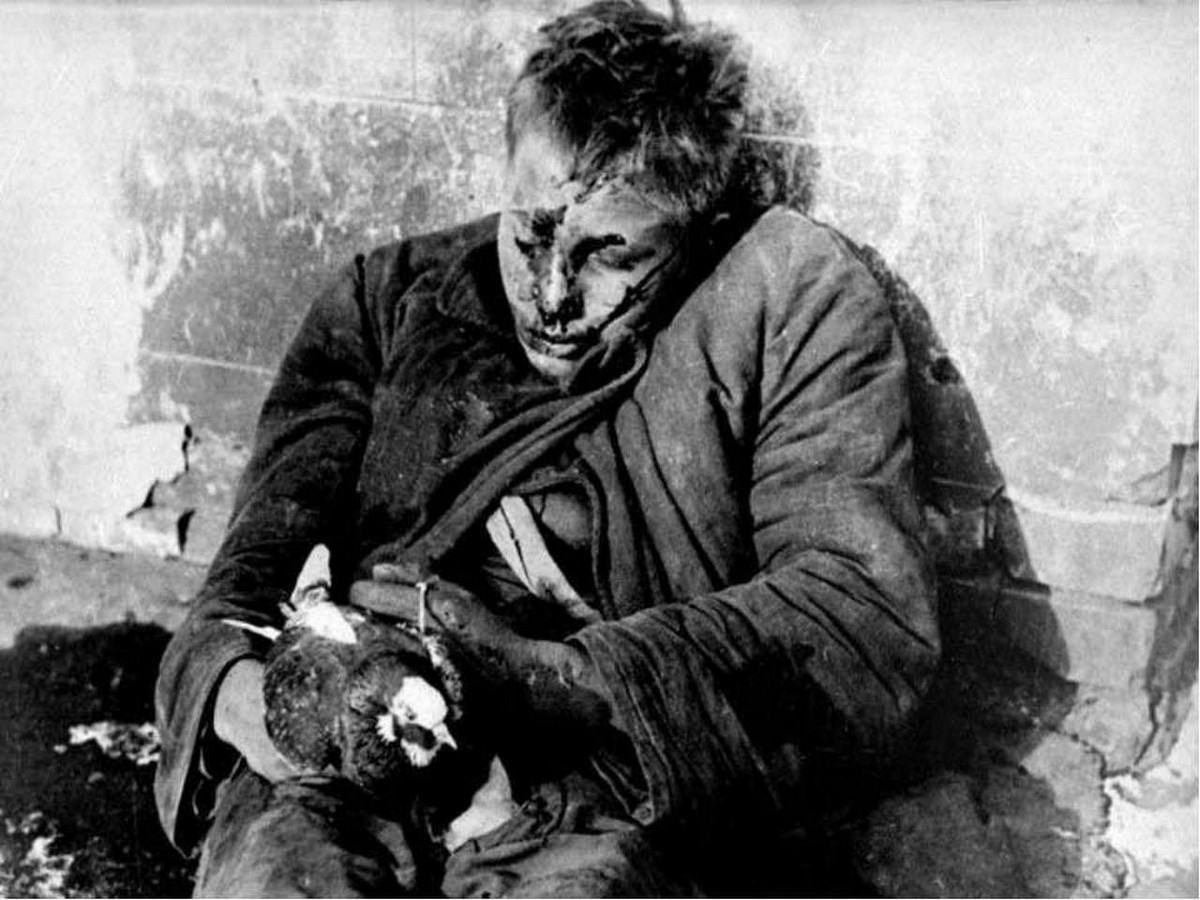
A wounded soviet soldier with a pigeon
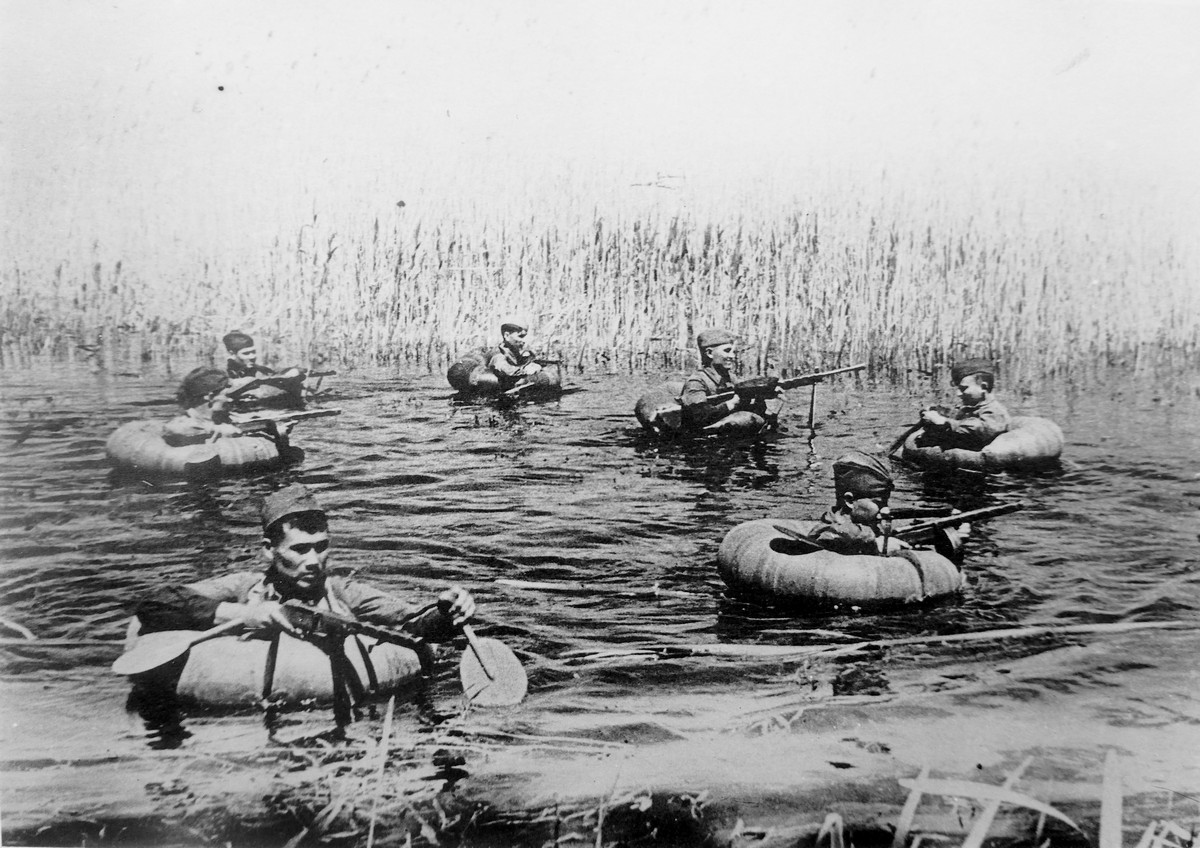
Russian scouts crossing the street during the combat mission, 1943
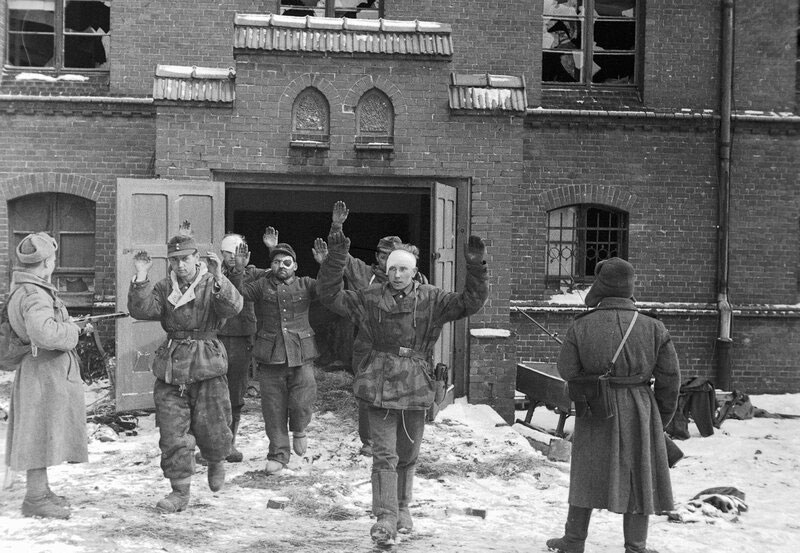
German soldiers surrender to the Soviet Army.
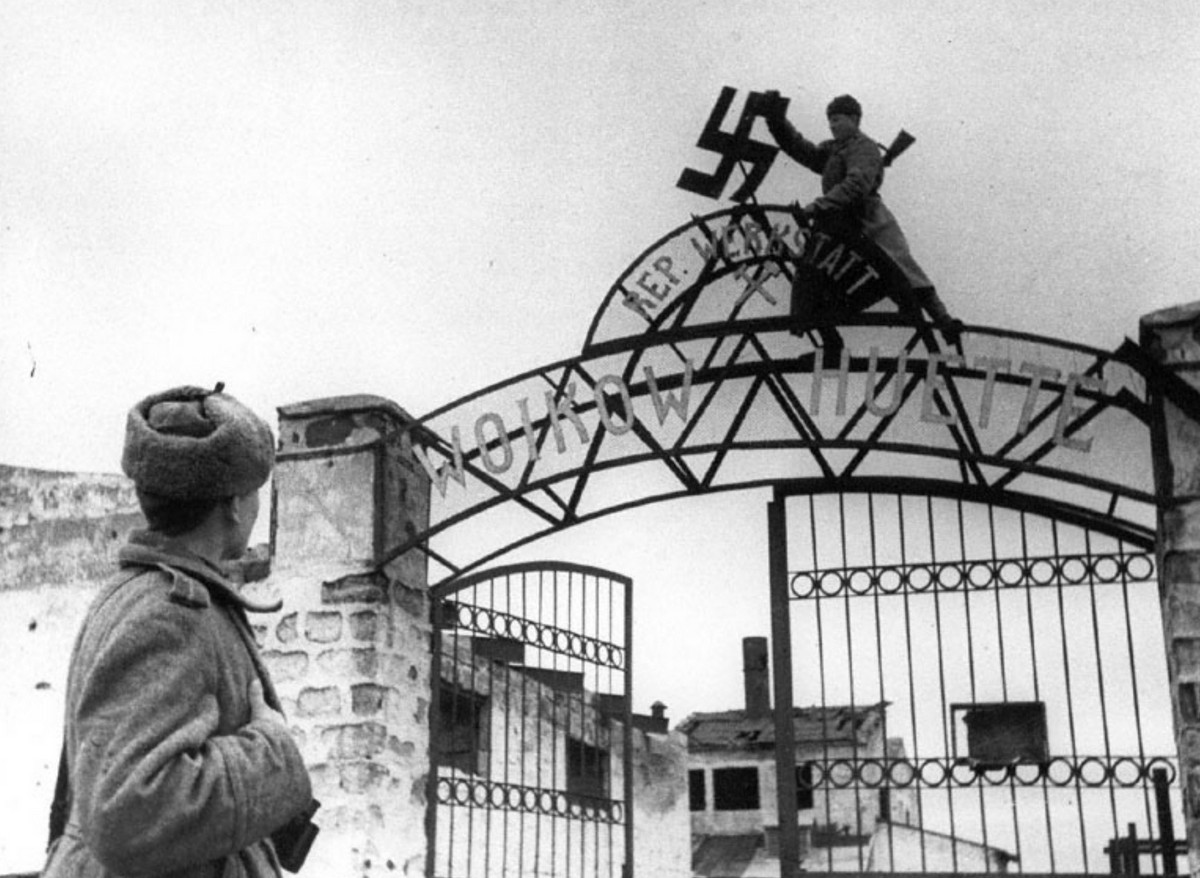
Soviet soldier gazing at the gates of the concentration camp
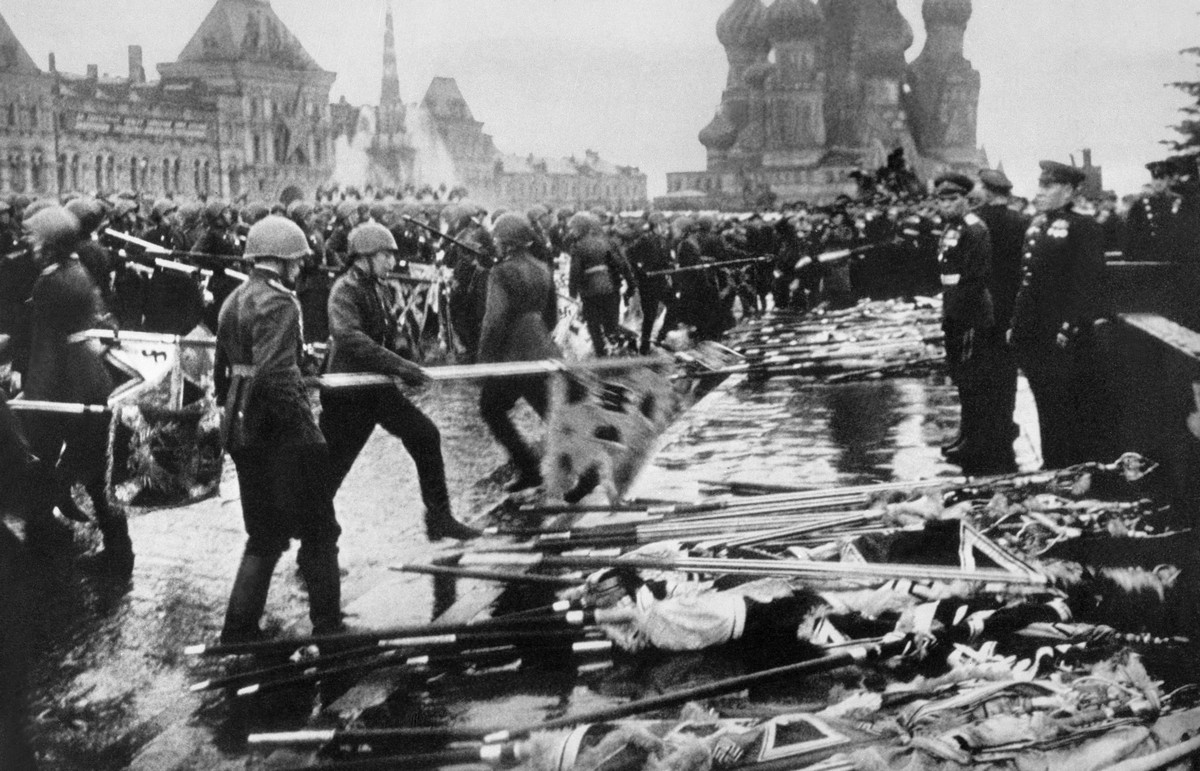
The Victory Parade in the Soviet Capital, Moscow, 1945
Сообщение Outstanding Soviet WW2 pictures (Part I: Max Alpert) появились сначала на Old Pictures.
]]>Сообщение Kaiser Wilhelm II and Tsar Nicholas II, 1905 появились сначала на Old Pictures.
]]>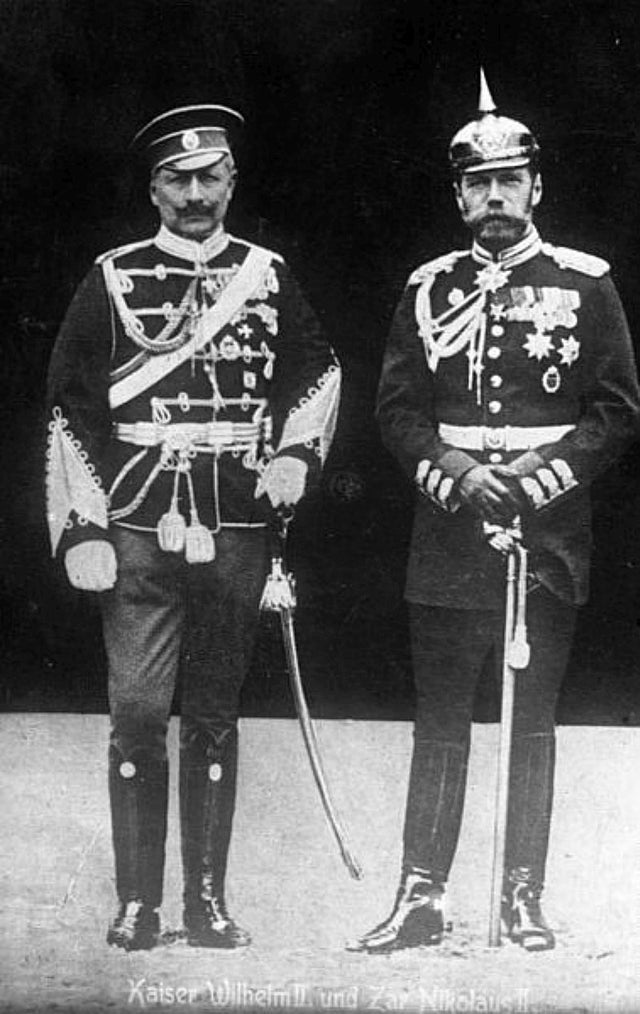 In this photo German and Russian Emporors, Kaiser Wilhelm II and Tsar Nicholas II, wearing each others’ uniform. They met on the russian ship Polar Star in summer of 1905, trying to sign a new treaty. We were missing Nicholas II in this picture of Nine European kings.
In this photo German and Russian Emporors, Kaiser Wilhelm II and Tsar Nicholas II, wearing each others’ uniform. They met on the russian ship Polar Star in summer of 1905, trying to sign a new treaty. We were missing Nicholas II in this picture of Nine European kings.
Kaiser Wilhelm II initiated that negotiations trying to create a bloc of states against England. Relations between Russia and England at that time were hostile. Here’s why Nicholas II accepted this proposal of the German Emperor.
Emperors also had plans to induce France to join the alliance.
Russian ruler signed the agreement with Wilhelm II on the island of Bjorke, without notifying the Minister of Foreign Affairs Lamsdorf.
This treaty contradicted Russia’s obligations within the Franco-Russian alliance. And Lamzdorf managed to convince the tsar to send William II a soft refusal, citing formal obligations towards France. The treaty was actually annulled by a letter from Nicholas II to Wilhelm II of November 13, 1905.
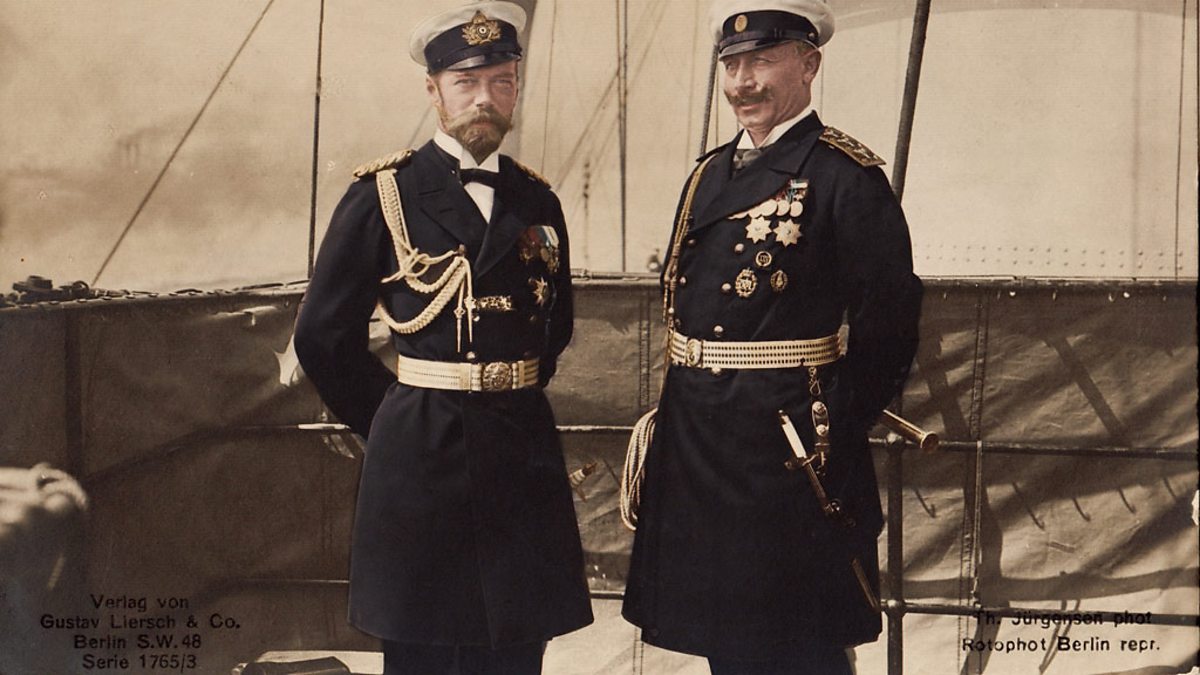
Сообщение Kaiser Wilhelm II and Tsar Nicholas II, 1905 появились сначала на Old Pictures.
]]>Сообщение Amazing Russia of the 1990s in 23 pictures появились сначала на Old Pictures.
]]>Jean-Paul Guillotho traveled to Russia several times, from 1991 to 1996. Russia definitely said bye-bye to the Soviet Union in the 1990s, but some of these pictures stilled the transition moment.
Check out our photo selection of Moscow photography of the 1950s and some pictures from the late 1980s. Both photos sets are made by foreigners too.
Read more: Dior Models in Russia, Moscow, 1959
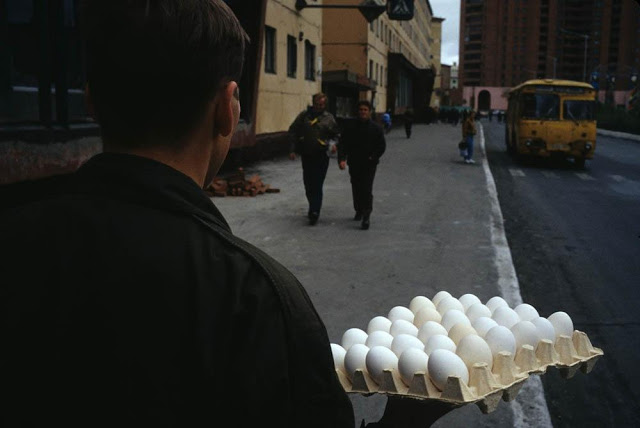
A citizen of Norilsk with egg tray, 1993
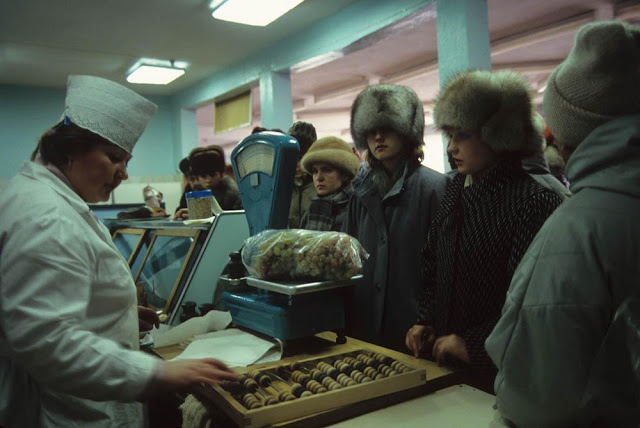
A food store in Russia, the 1990s
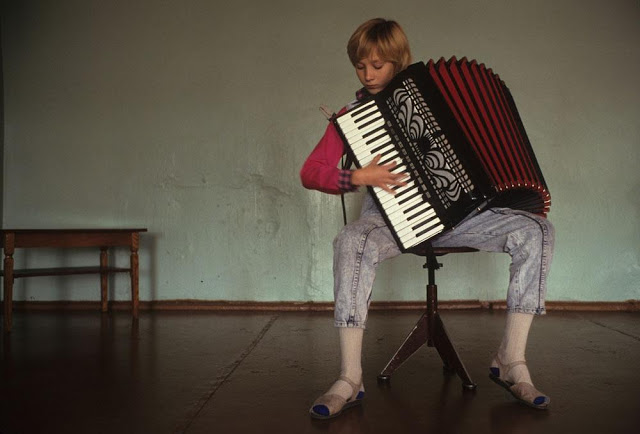
A musical school in the rural area of Russia, the 1990s
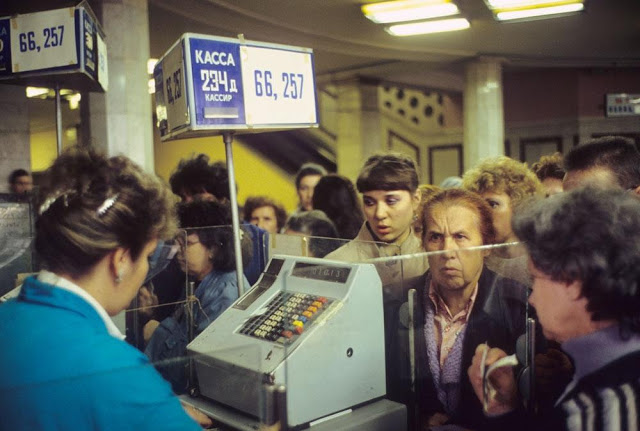
A queue in the toy store, 1991. Well, the queues were an integral part of the Soviet lifestyle, but it quickly disappeared in the mid of the 1990s.
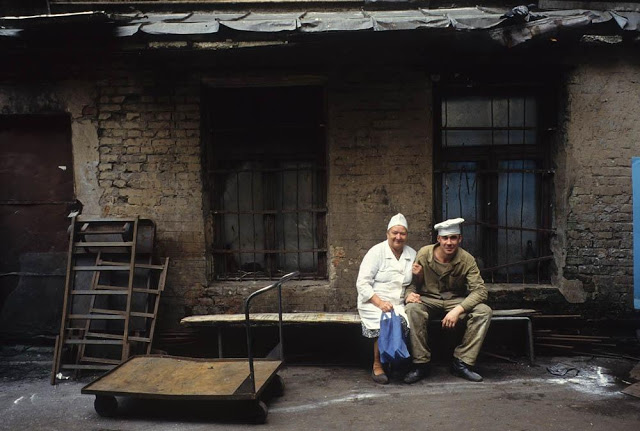
At the backyard of the hotel in Moscow, 1993
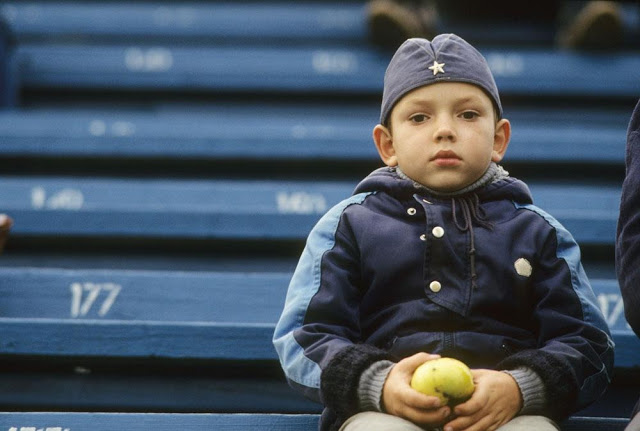
Boy watching a football match at the Dinamo stadium, 1992
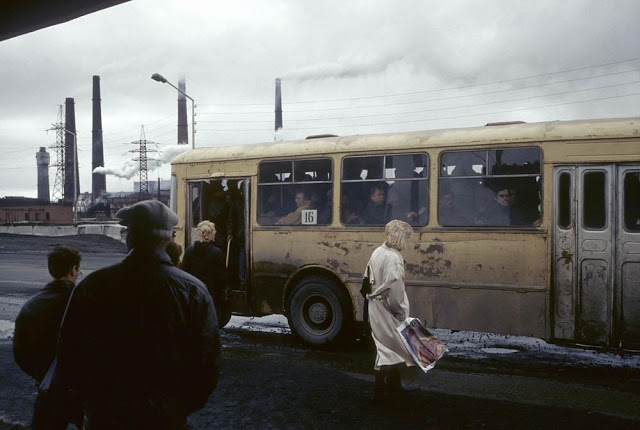
Bus stop in the city of Norilsk, 1993
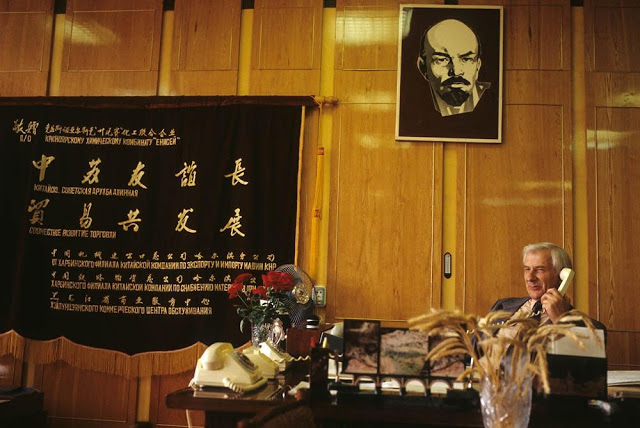
CEO of Krasnoyarsk Chemical Plant, 1993
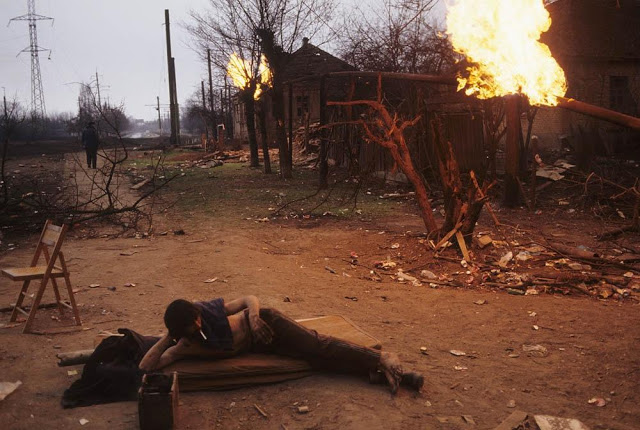
The very beginning of the war in Chechnya, January 1995.
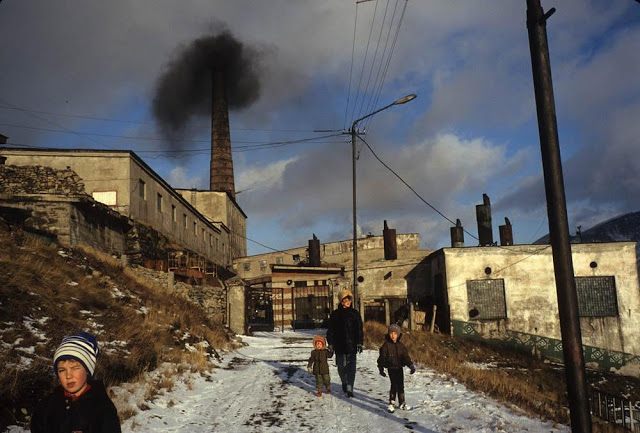
Coal plant, 1995
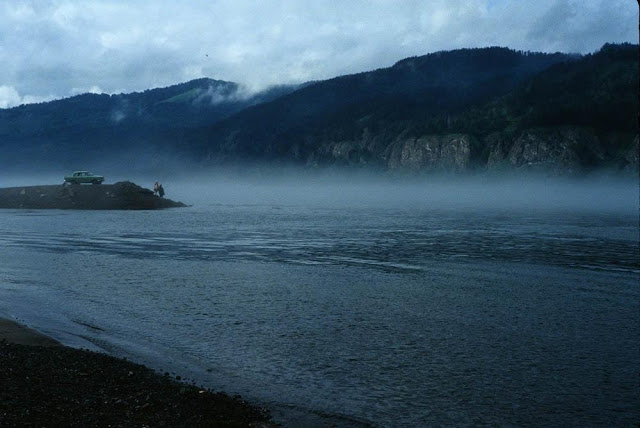
Amazing view of Enisey river, 1993
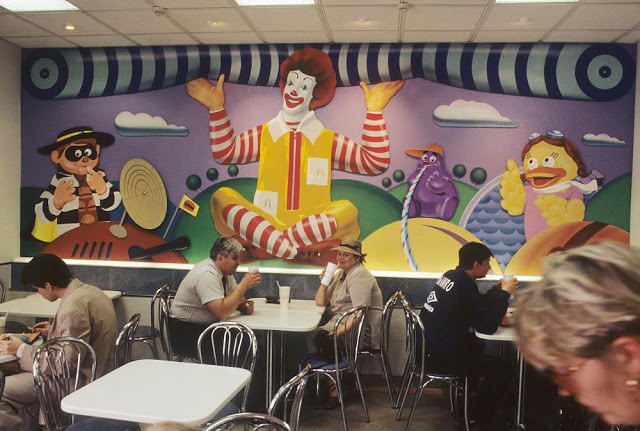
Inside the Russian McDonalds restaurant, 1996
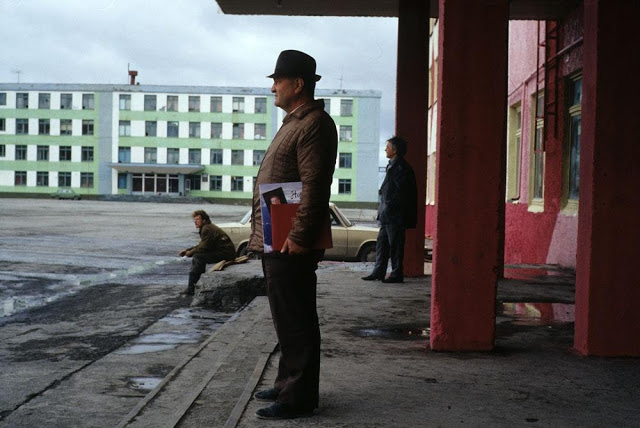
Mine office, Russia, 1994.
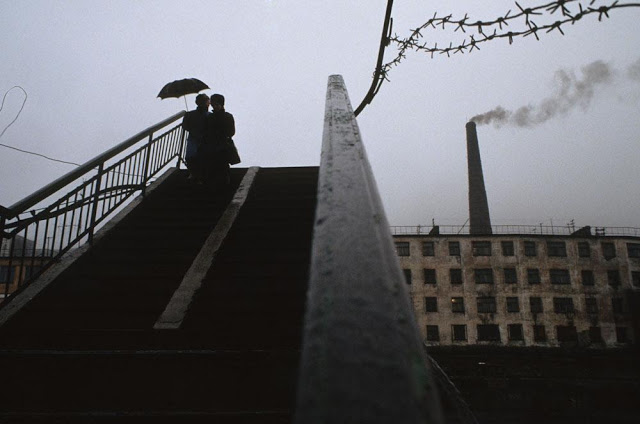
Barbed wire at the port bridge, Russia, 1993.
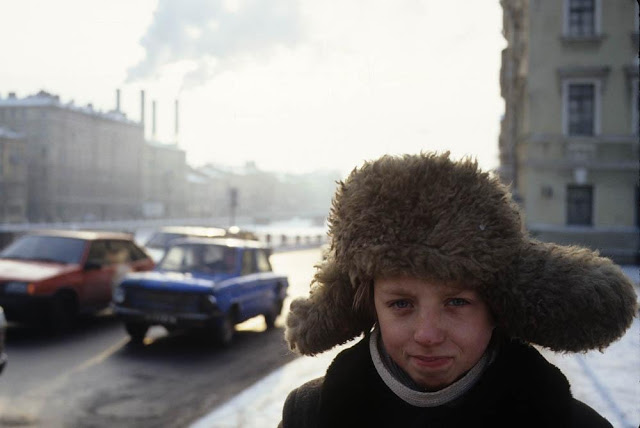
St.Petersburg kid, 1993
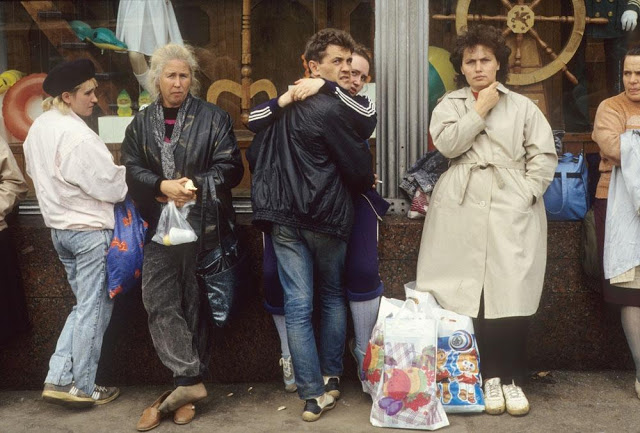
Streets of Moscow, 1991
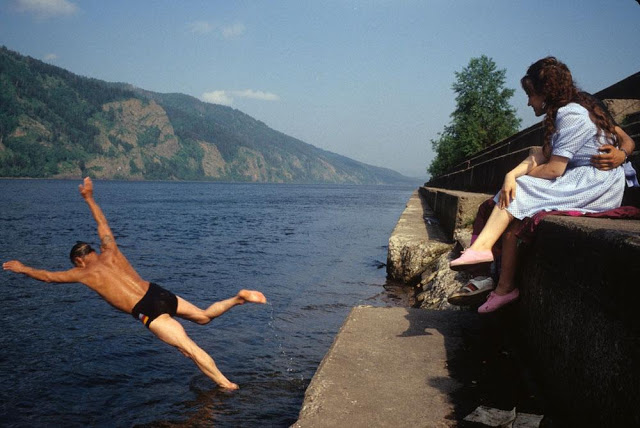
Swimming in the Enisey River, Krasnoyarsk city, 1993
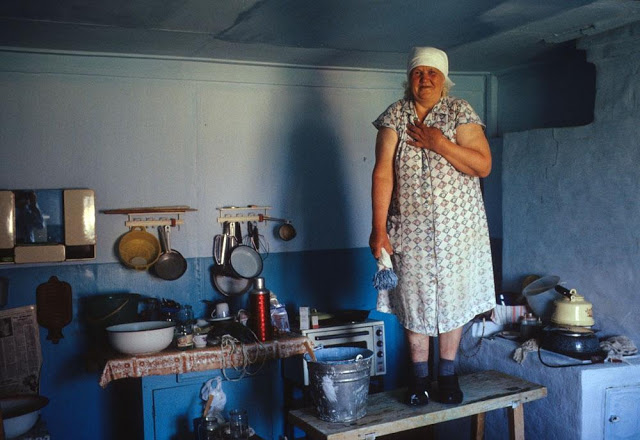
The local of rural Russia, somewhere in the Krasnoyarsk region, 1990s.
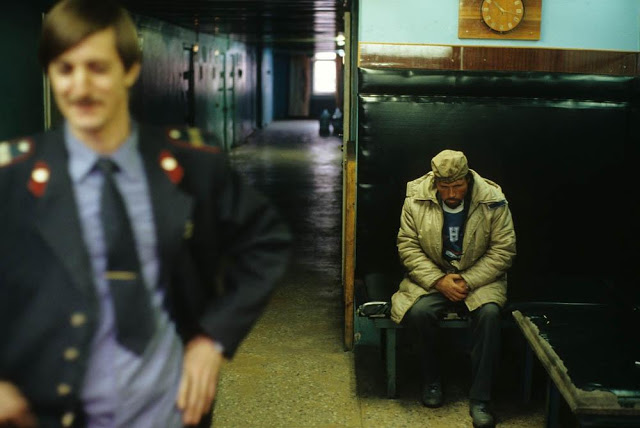
The drunken man at the police department, Norilsk, 1993
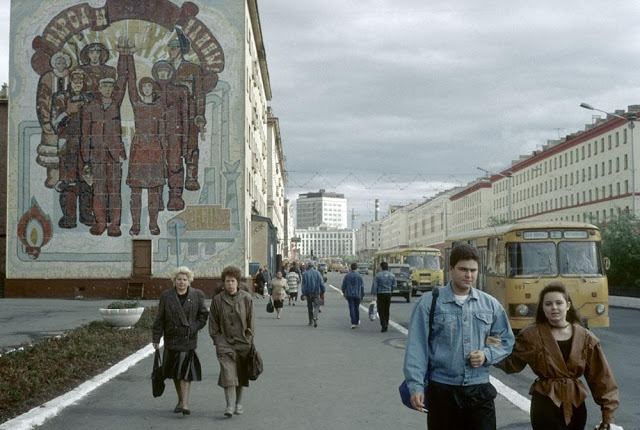
The streets of Norilsk, 1993
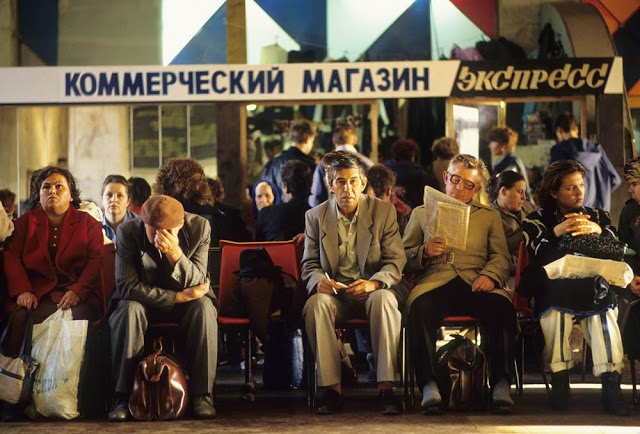
The train stations were an important social hub in the USSR. This how the typical train station looked like in Moscow, 1990s
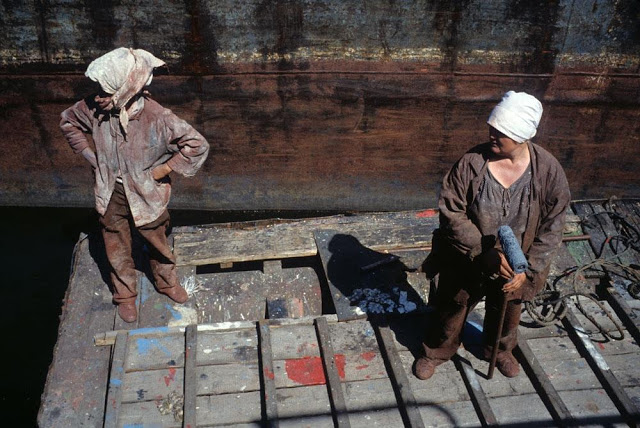
Workers at the river port of Krasnoyarsk city, 1993
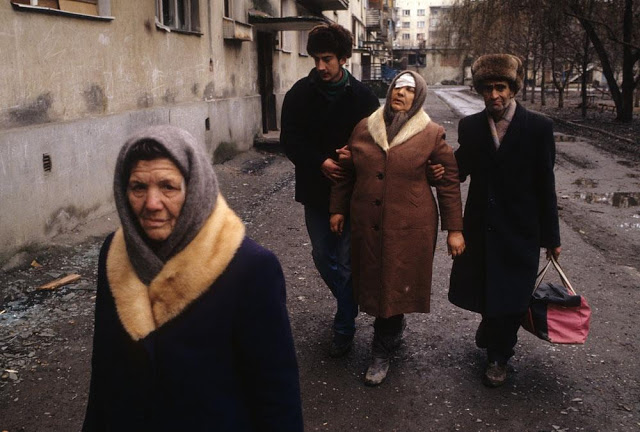
Wounded women at the streets of Grozny city during the First Chechnya War, 1995
Сообщение Amazing Russia of the 1990s in 23 pictures появились сначала на Old Pictures.
]]>Сообщение Bizarre pictures of the soviet parade of the 1920s and 1930s появились сначала на Old Pictures.
]]>After discovering some bizarre pictures of the nudists in the Soviet Moscow of the 1920s we decided to dig dipper and found some noteworthy parade pictures. We excluded all blended army parade photos and selected only fascinating images of the very special soviet reality of the 1920s and 1930s. Enjoy.
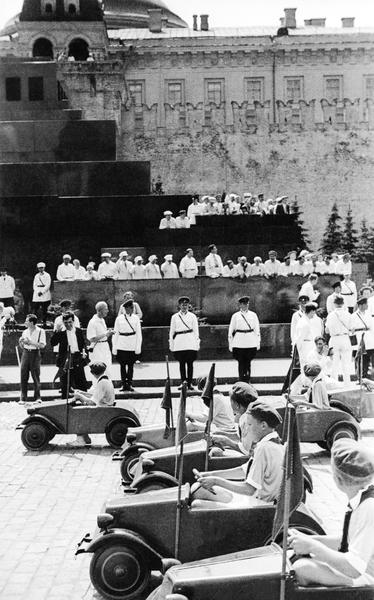
These kids driving the toy cars symbolize the newborn Soviet industry. In fact, the Soviet Union produced very few cars in the 1920s.

May 1 was a very special day for Soviet Russia, and it was a parade day. In this picture, women are marching in gas masks. Maybe, it should demonstrate the readiness for a world war.
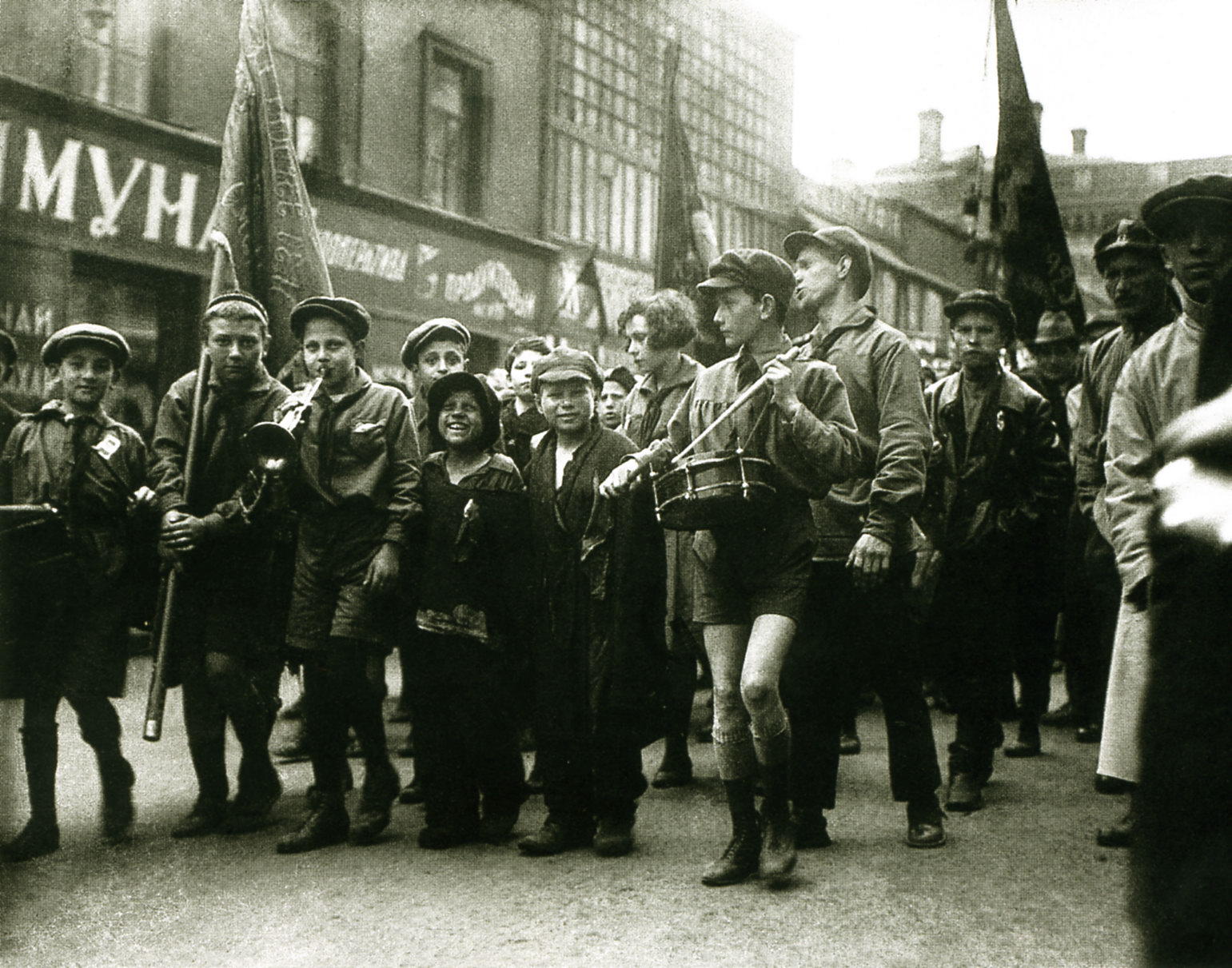
Soviet pioneers (kind of scouts) are marching with homeless kids during a parade in the 1920s. Soviet power tried to demonstrate that they treat kids in a new, socialistic way.

It is a sports parade in Moscow, 1920s. Soviet Russia was proud of its sportsmen and tried to show it in any possible way.

This Parade pig sculpture symbolizes capitalism, the source of all possible sufferings according to the propaganda in Soviet Russia.

And here’s an interesting one. Here we have an anti-religion parade, which was a common thing in Soviet Russia in the 1920s and 1930s. Bolsheviks denied all religions, demolished a lot of churches and cathedrals, abolished all possible Christian holidays like Christmas or Easter.

A massive head of Vladimir Lenin at the parade in Leningrad on May 1, 1925

The soviet sportsmen at Red Square in Moscow, 1930s.

Army parade at the Red Square in Moscow, 1927.

Bicycle riders during an army parade. The Soviet Union declared its peacefulness but was getting ready to fight with all means.
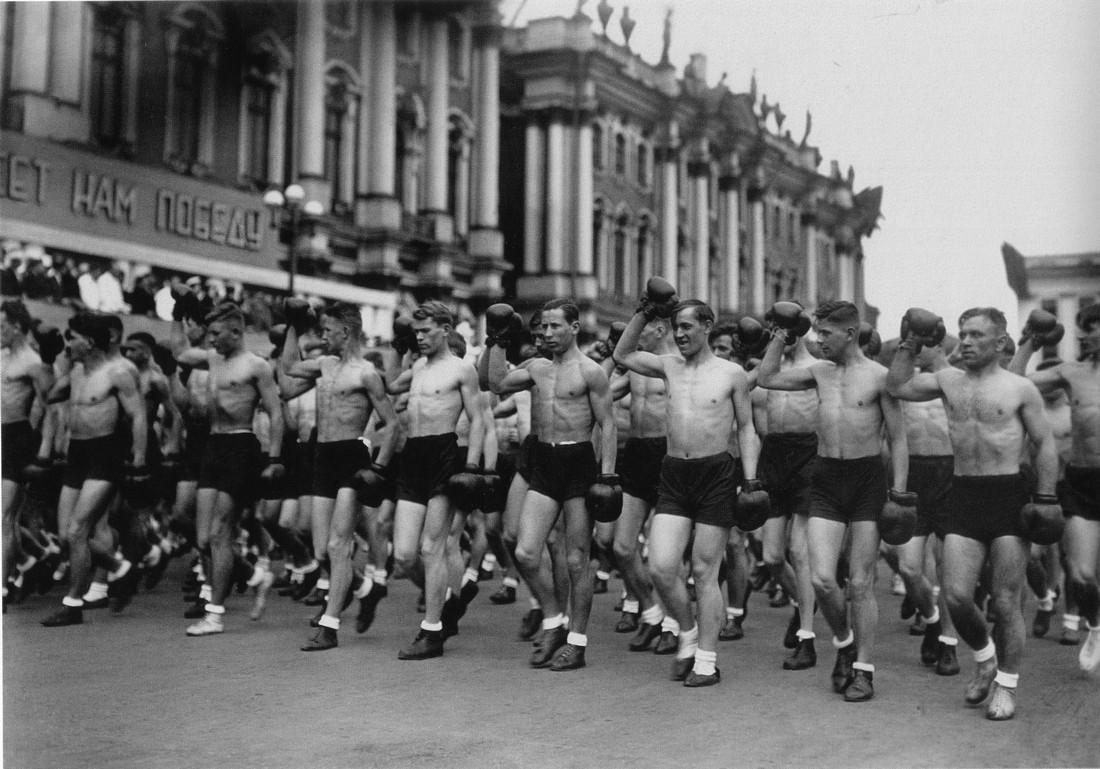
A group of mighty sportsmen with boxing gloves.
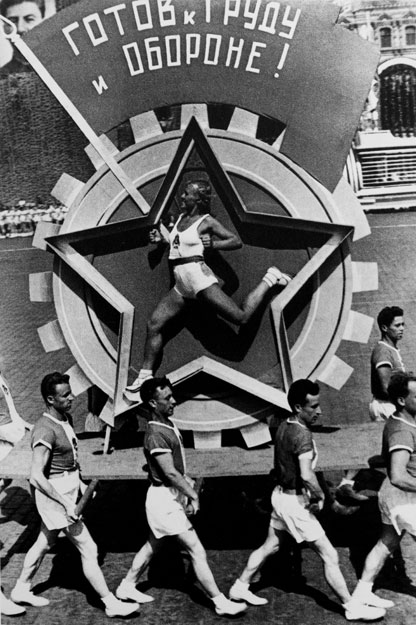
This man demonstrates the readiness for war at any point in time. It was a sure thing for the Soviet people to be ready for a new war.
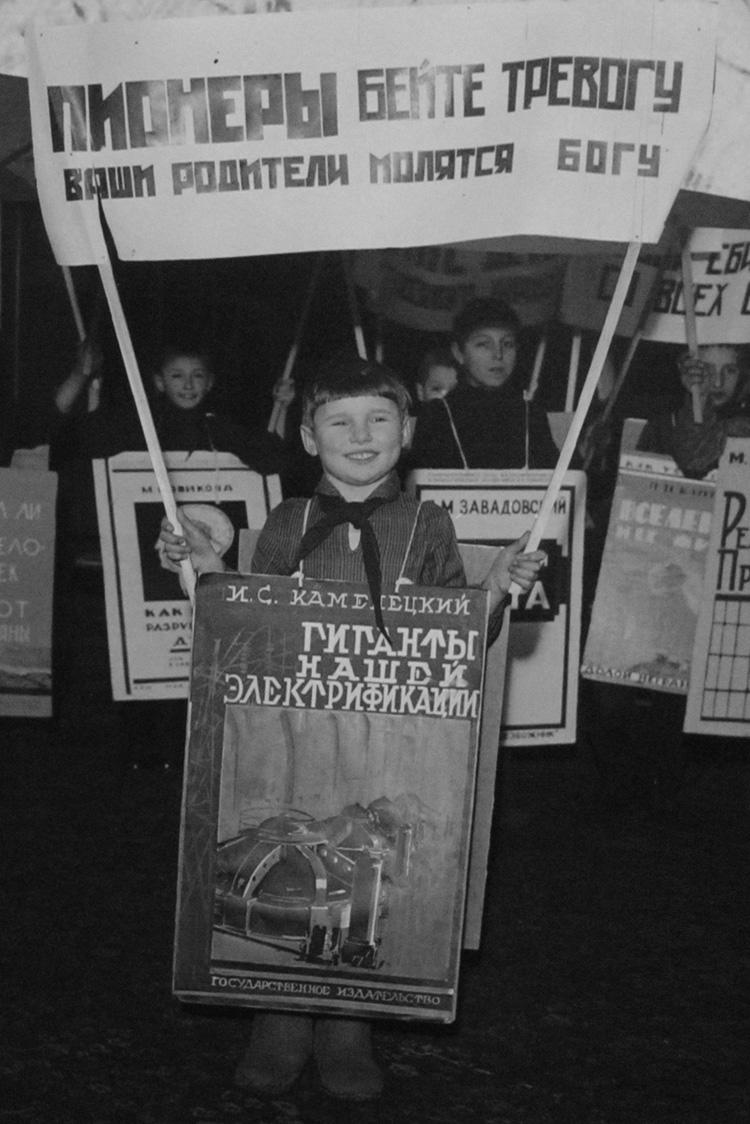
Kids during the anti-religion parade with a poster that calls to stop praying god.
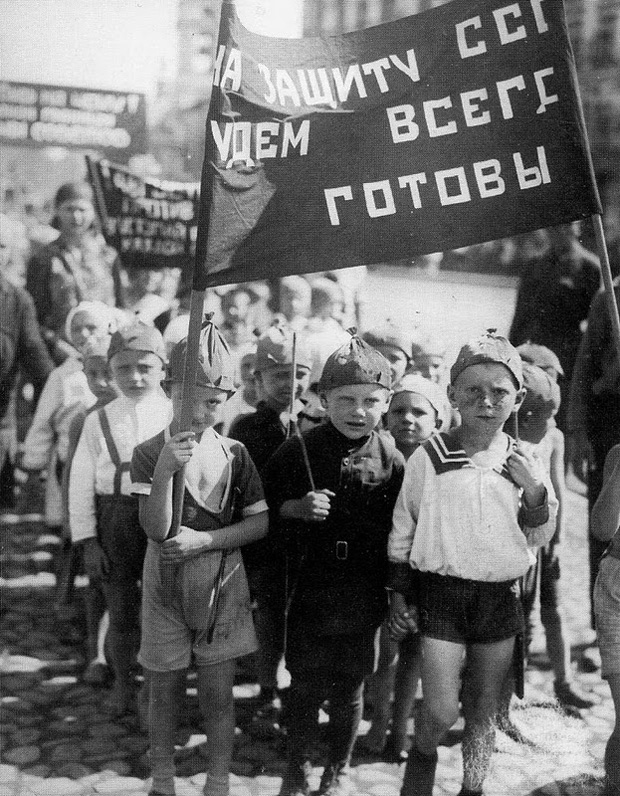
Another kid parade in the USSR.
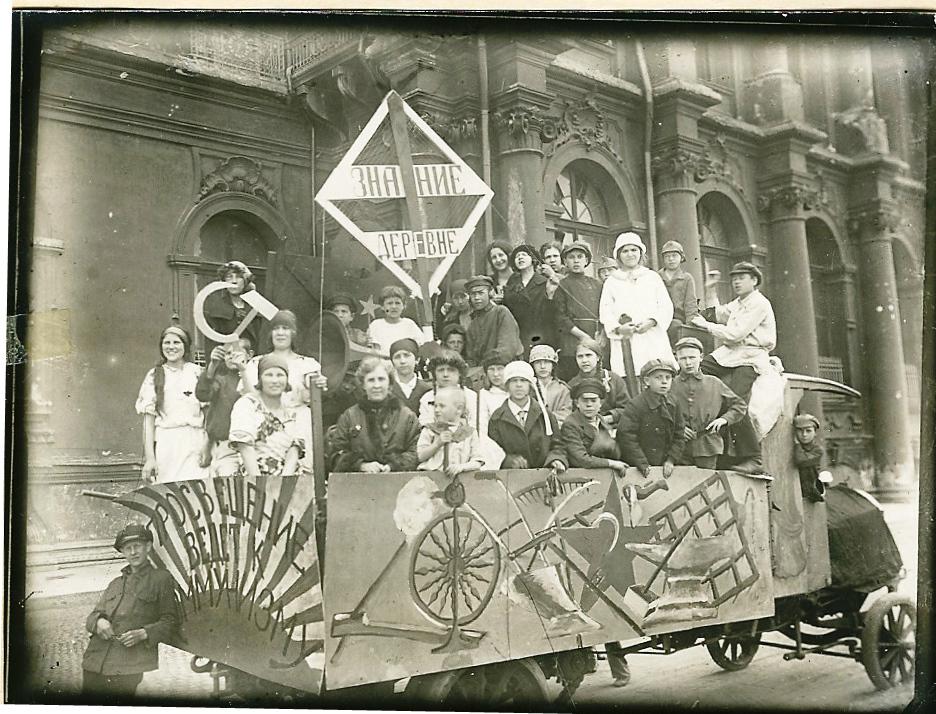
Education holiday in Soviet Russia, the 1920s.
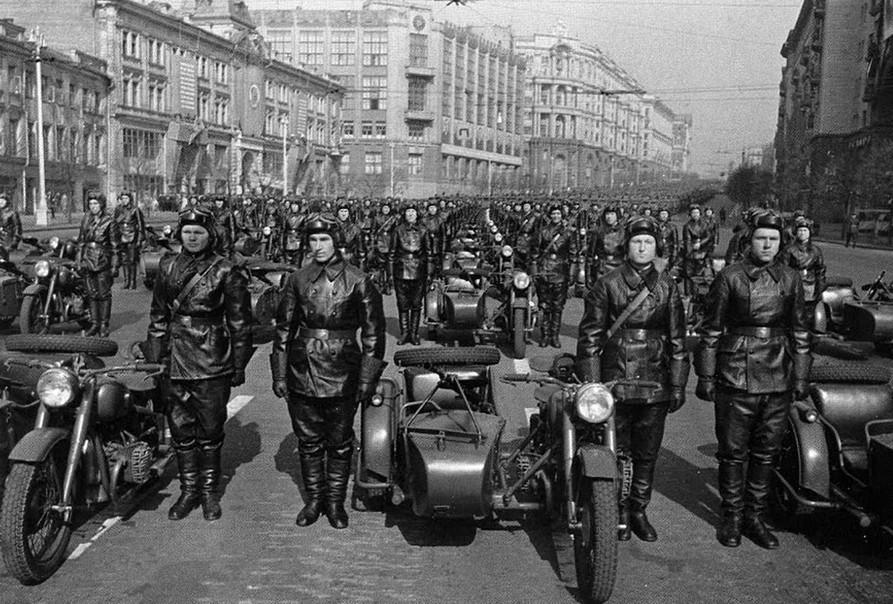
Army motorcyclists before the parade, the 1930s.
Сообщение Bizarre pictures of the soviet parade of the 1920s and 1930s появились сначала на Old Pictures.
]]>Сообщение Rare pictures of the early soviet police NKVD появились сначала на Old Pictures.
]]>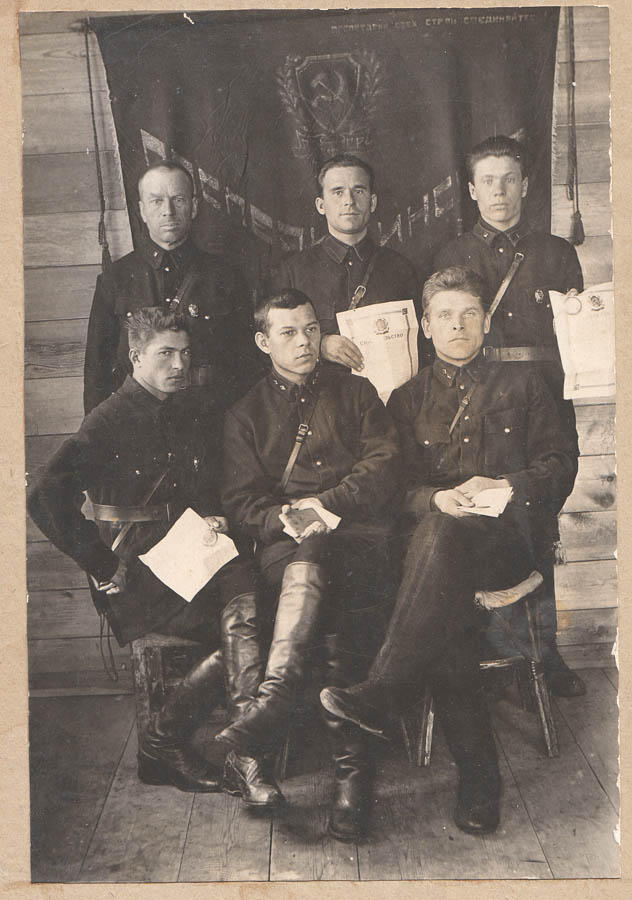
In this picture, the NKVD team with honors, 1928. Usually, NKVD members received honors for either executing people or torturing them during the short trial.
The mass repressions in the Soviet Union in the 1930s are well known. And while Joseph Stalin clearly orchestrated this process, an interesting armed unit in the Russian government executed all the death sentences. It was soviet police – NKVD. Oldpics decided to publish several noteworthy pictures of NKVD officers and interesting facts about their service.
Although NKVD was formed on July 10, 1934, it’s safe to say that this unit secured the Soviet power during its early years. Actually, NKVD had the name of OGPU before 1934. There’s no need to dig through the Russian abbreviations: it was just a police monster unit that combined regular and secret police.
There were three directors of the NKVD: Heinrich Yagoda, Nikolai Yezhov, and Lavrenty Beria. All of them were sentenced to death.
NKVD controlled regular police, the penitentiary system, foreign intelligence, border troops, counterintelligence in the army, and navy units. It covered the political investigations and had the right to execute sentences without court trials.
The formation of the NKVD in the Soviet Union started the so-called “Great Terror of the 1930s”. However, people’s commissars also made a significant contribution to the organization of political repression.
Take a look at these rare pictures of the NKVD officers.
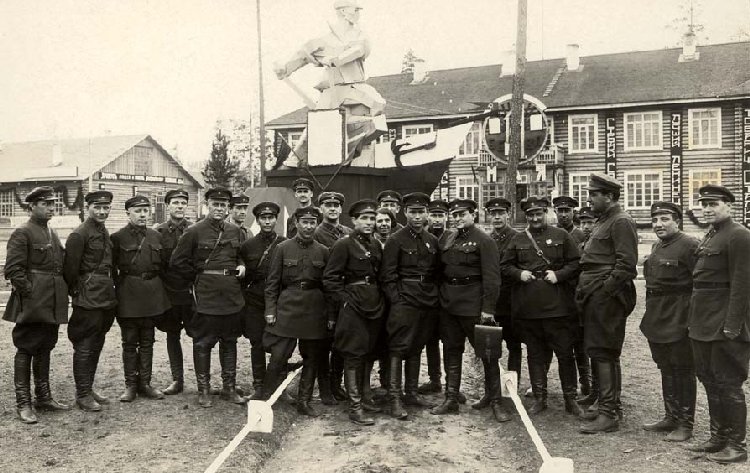
The important part of NKVD: All directors of the concentration GULAG camps in one photo, 1934.
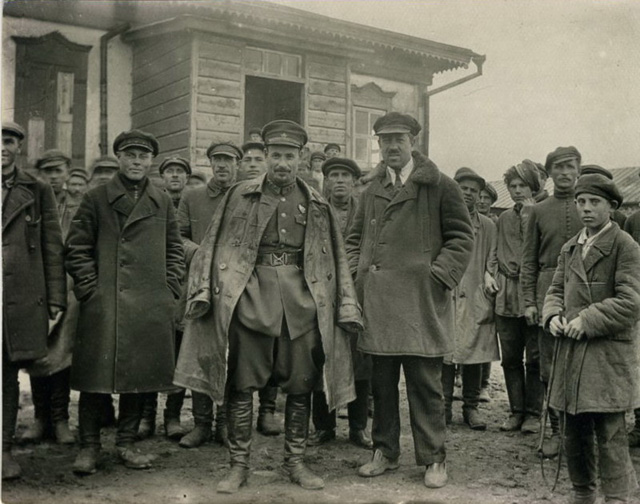
NKVD team during the expropriation of food in the countryside.
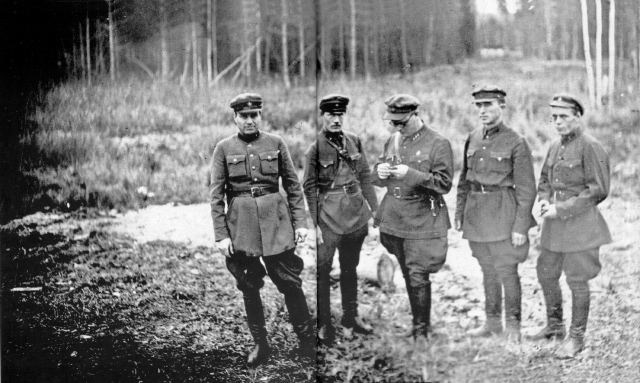
The pictures of the shooting squad of NKVD. These people executed the death sentence.

It’s hard to believe, but the NKVD crew participated in the public works between the arrests and executions.
Сообщение Rare pictures of the early soviet police NKVD появились сначала на Old Pictures.
]]>Сообщение Vintage pictures of the Soviet Moscow of the 1950s появились сначала на Old Pictures.
]]>In 1956 Jacques Dupaquie reached Moscow. When speaking of his feelings about Moscow, he said that ‘It’s hard to believe that half of the buildings are wooden”. A French communist also couldn’t believe that soviet people live in such poverty.
You can experience the contrast between European and Moscow lifestyles with our set of photos of Dior Models during their visit to the USSR.
In thirty years, another European will visit Moscow. His photo set of the Soviet Capital before the collapse of the USSR you can find here.
Read more: 100 most important pictures in history
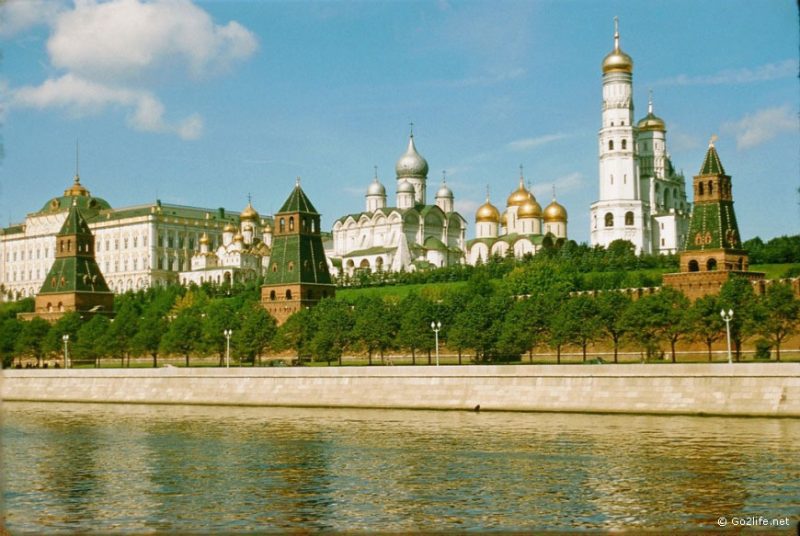
A lovely Moscow view.
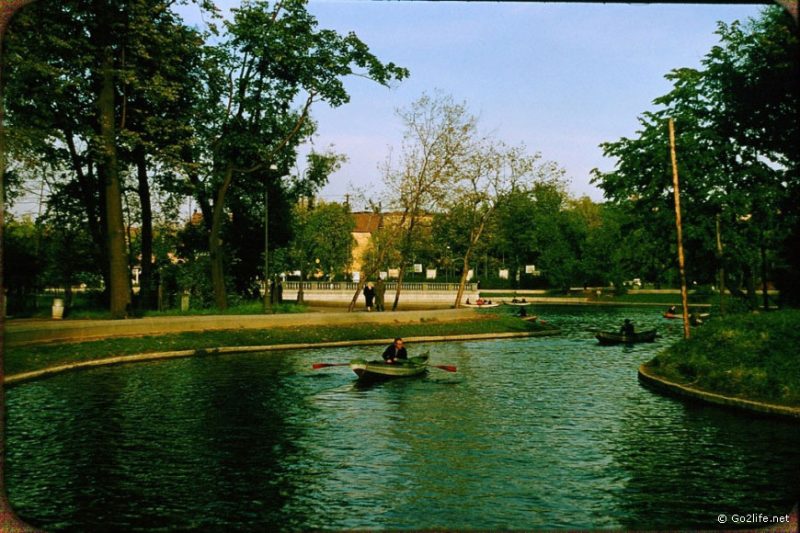
A man floating in the park of Moscow, 1950s
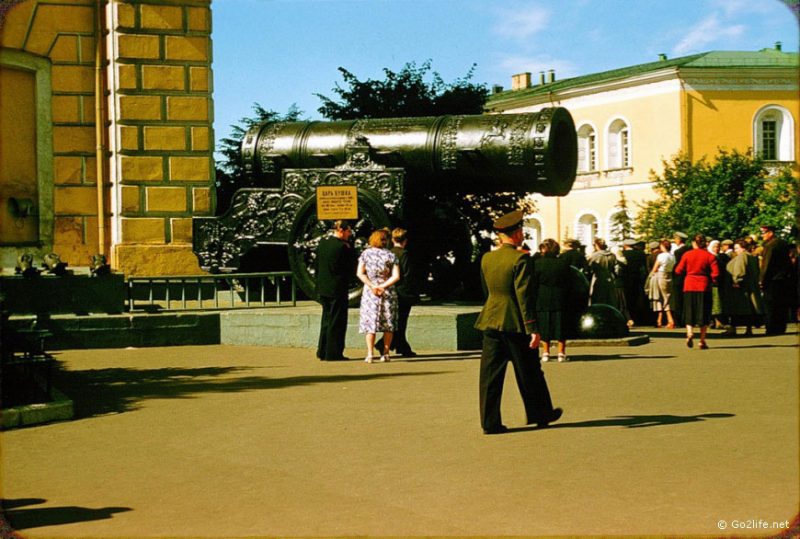
A massive cannon on the Red Square
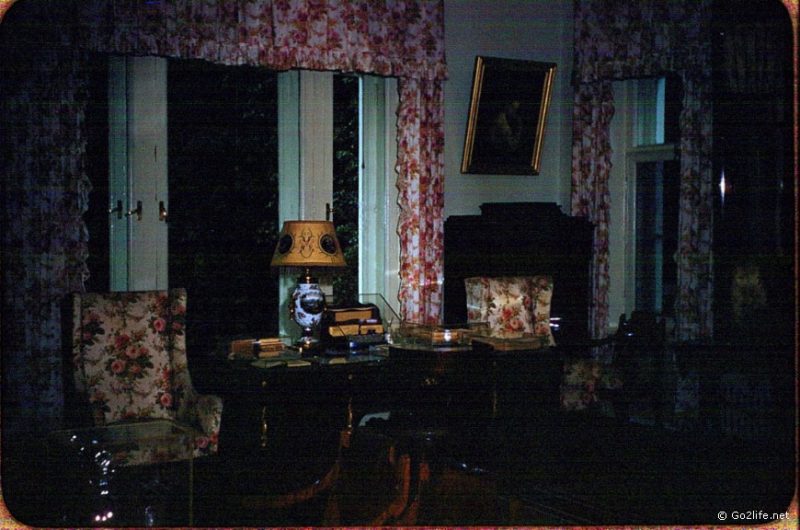
A typical interior of the soviet apartment. Nowadays, we can’t believe that many of the Soviet homes had the same furniture and design
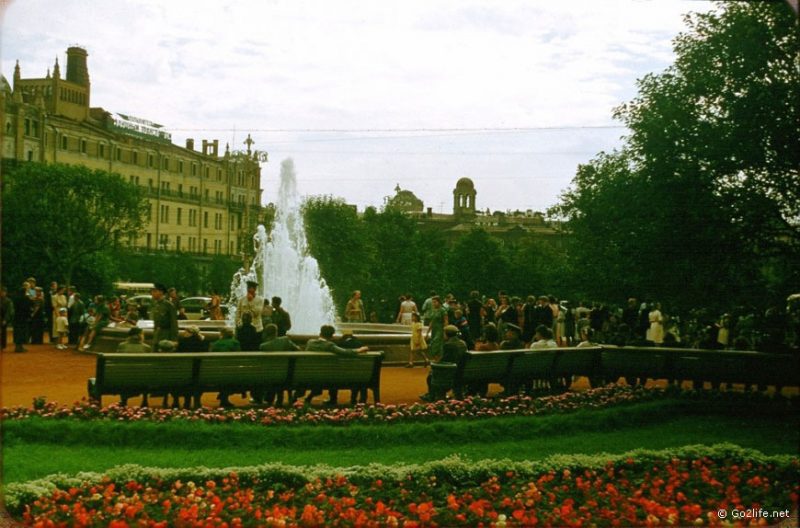
Fontaine attracted soviet people
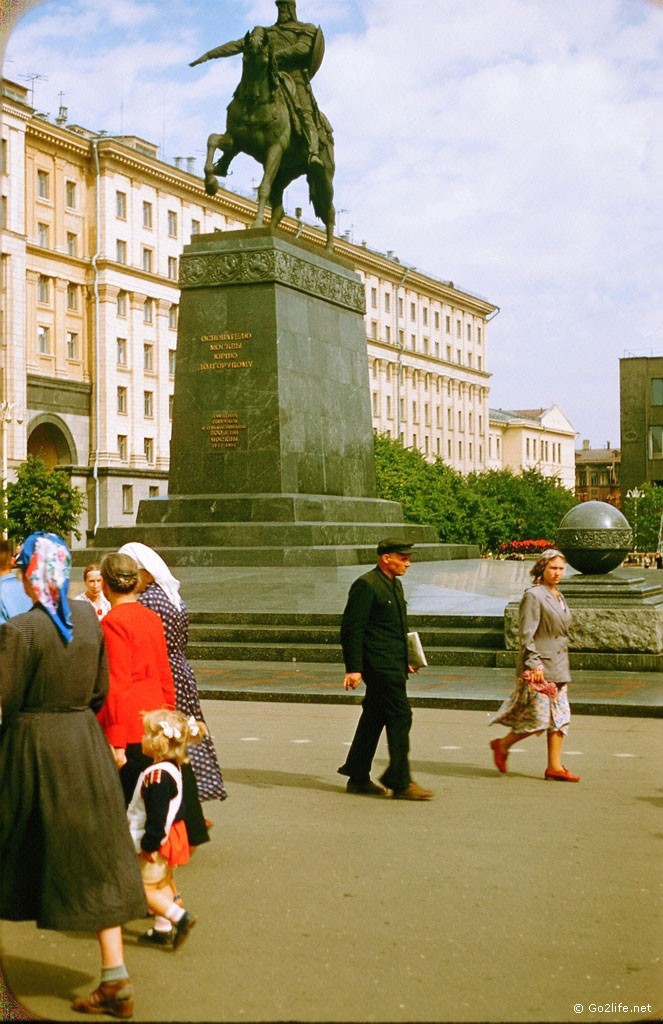
Founder of Moscow monument
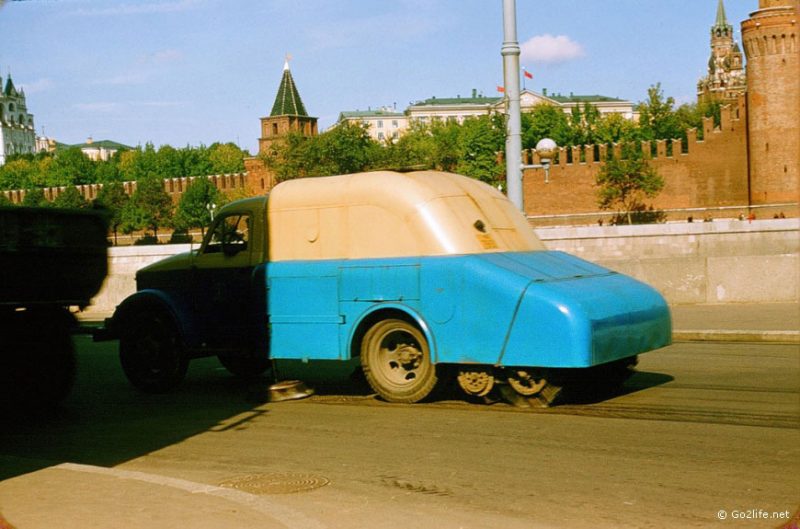
It seems like this is a road construction vehicle
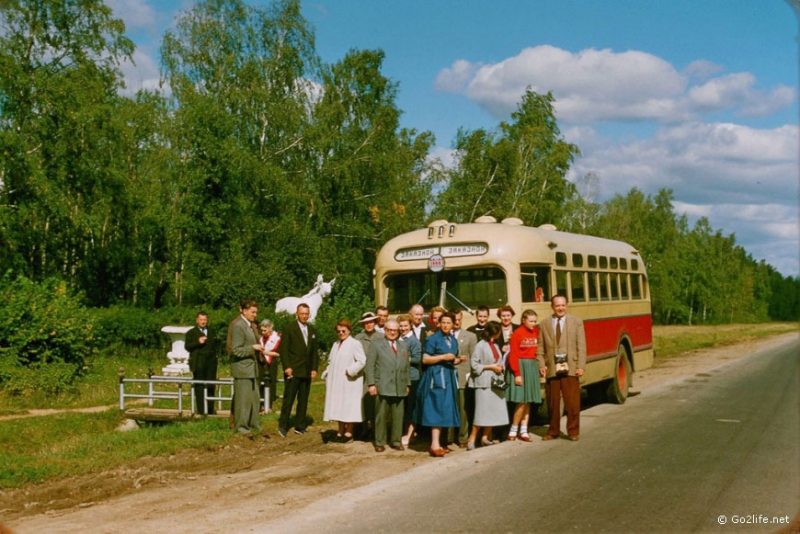
It’s hard to believe, but the passengers of this bus agreed to exit it in the middle of nowhere just for the photo of the foreigner
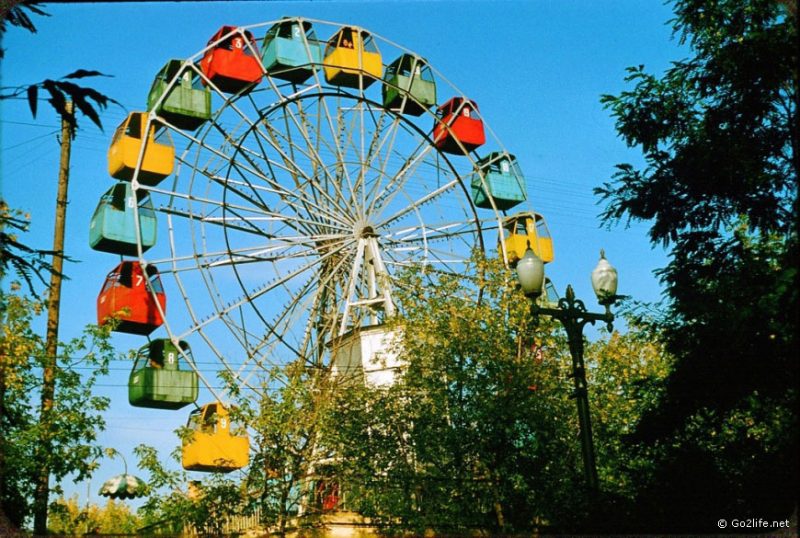
A lovely attraction for the Soviet kids
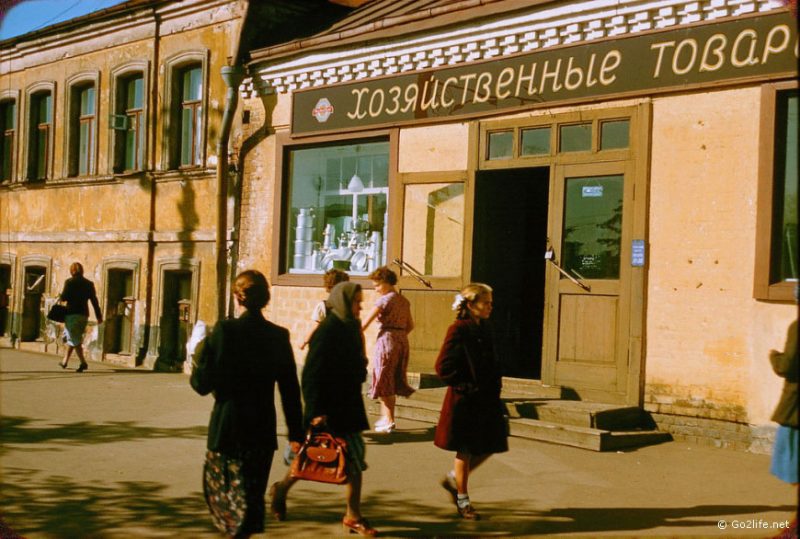
Many buildings in Moscow had a very poor outlook in the 1950s
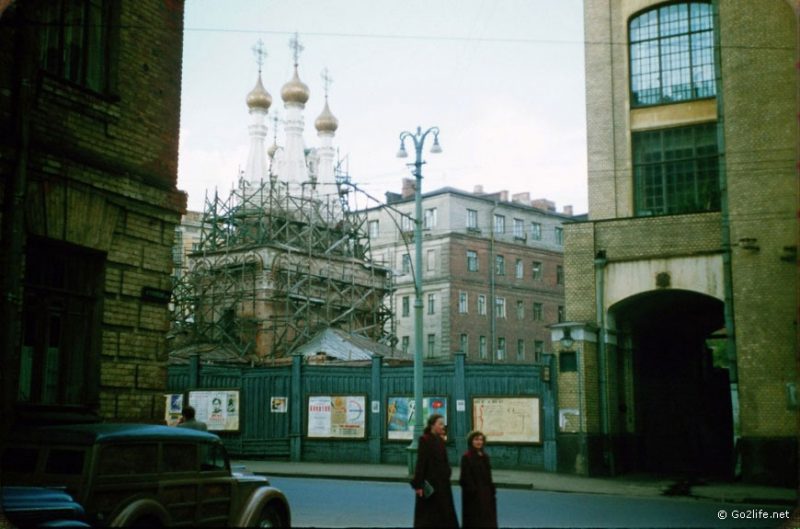
Many churches and cathedrals were destroyed during the Soviet rule.
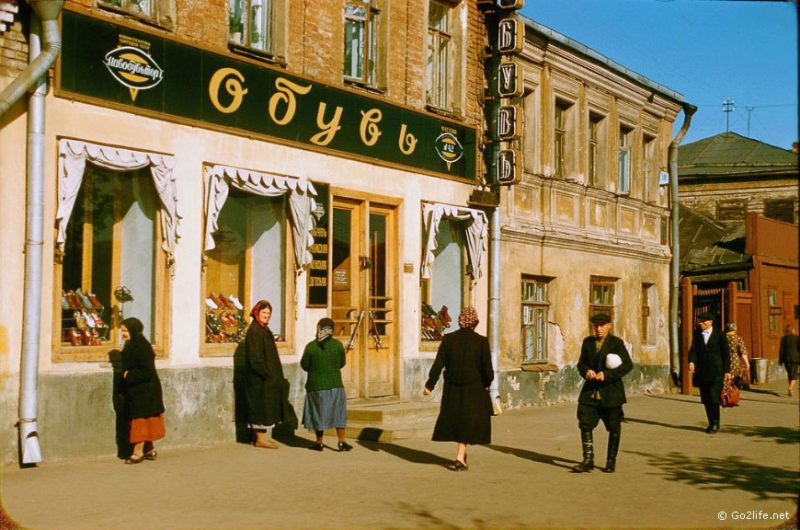
Soviet people passing by a store
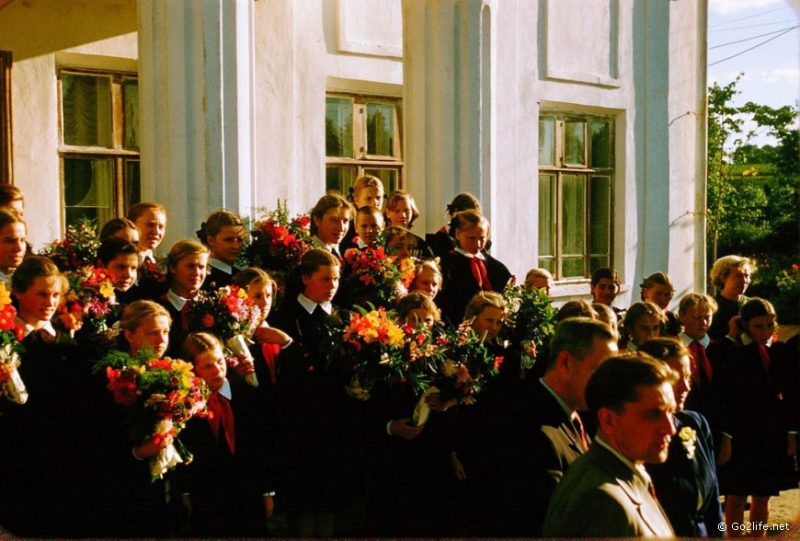
Soviet pupils
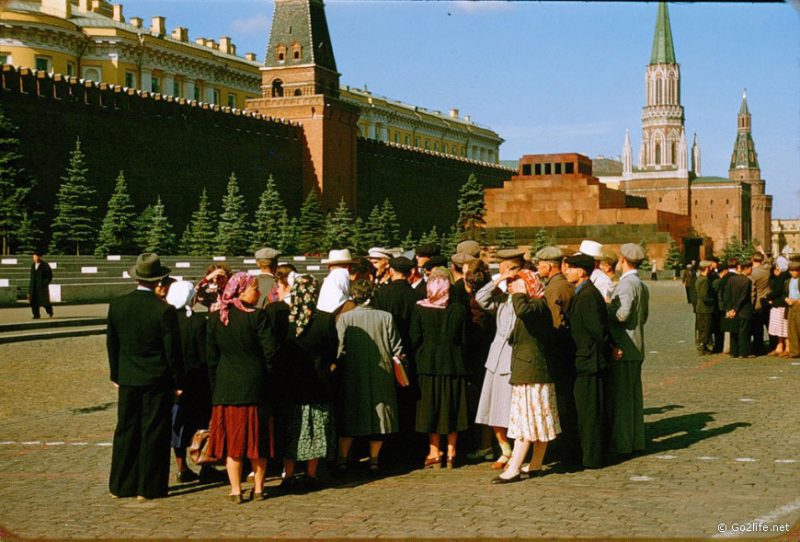
Soviet tourists on the Red Square in Moscow, 1950s
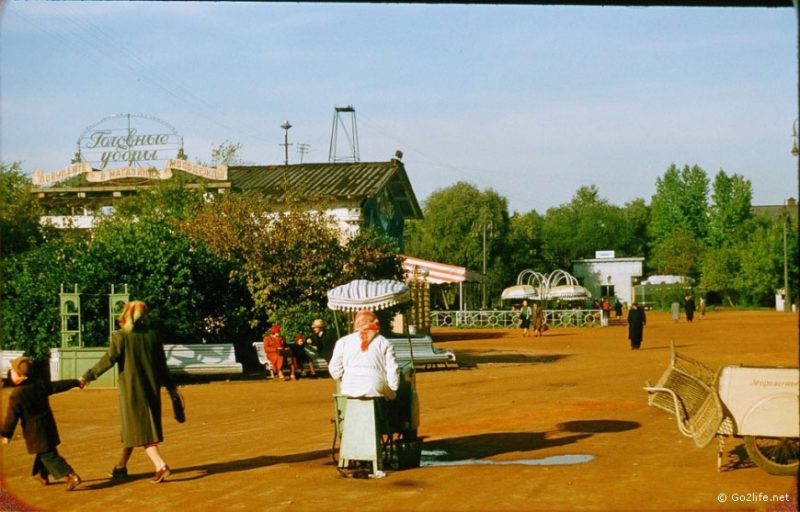
Street Food in Soviet Moscow, 1950s
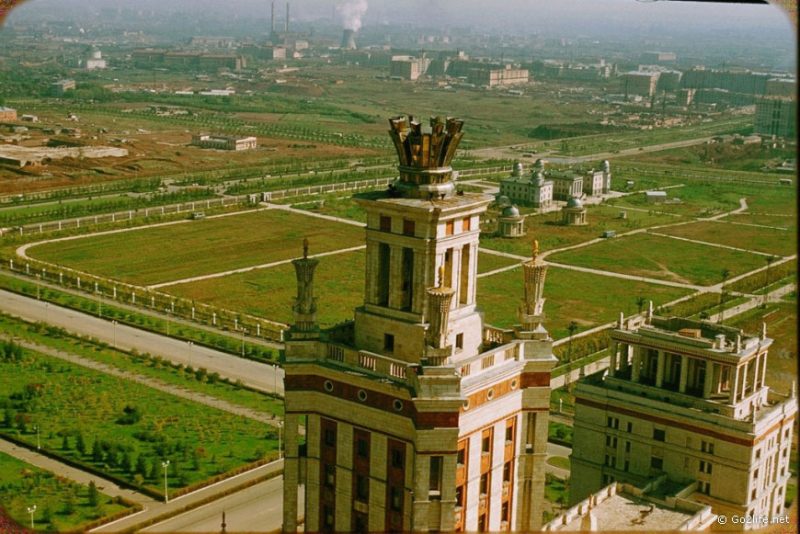
The monumental construction was a signature urbanist approach during Joseph Stalin rule
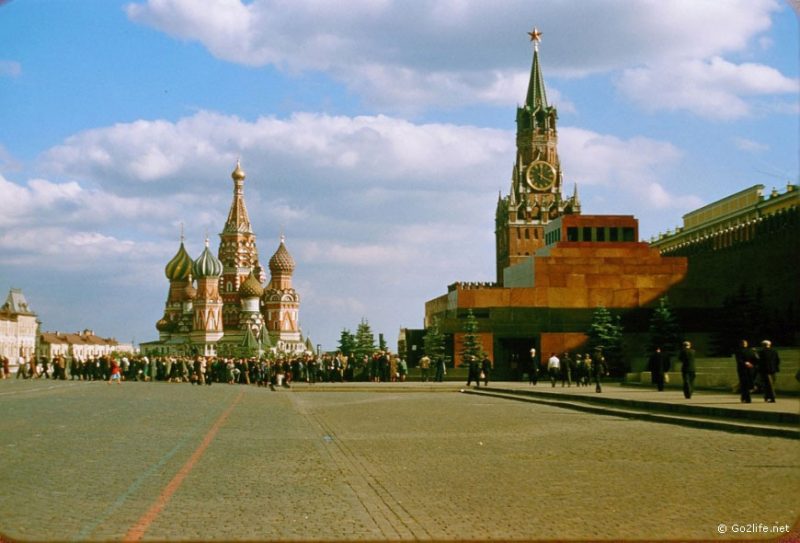
The Red Square, Moscow, 1950s
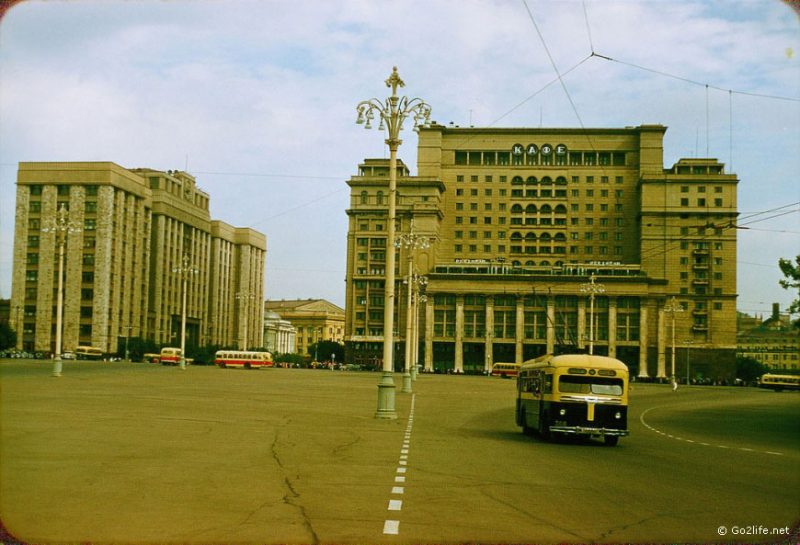
The streets of Soviet Moscow were pretty empty in the 1950s. Soviet people couldn’t afford to buy cars, while Russian industry focused on military production
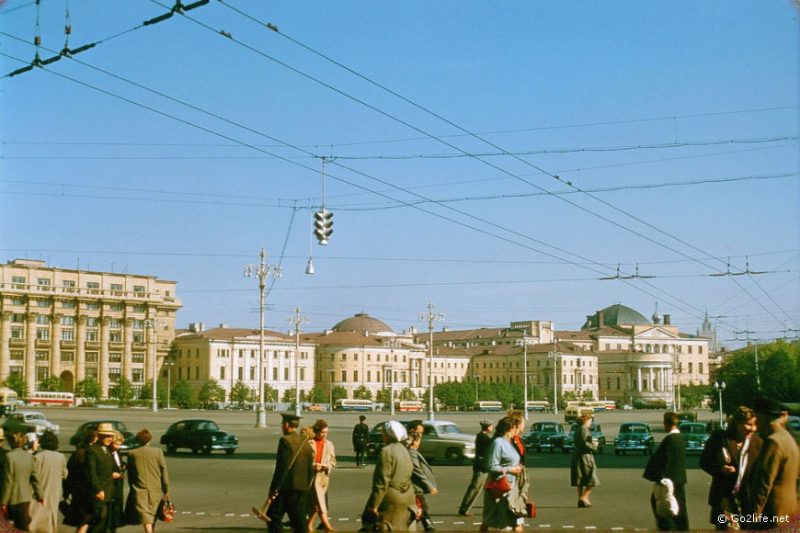
There were not so many car models in USSR in the 1950s. In this photo, all cars are the same model

These school students are looking relatively good. Many soviet kids had a much worse outlook in the 1950s.
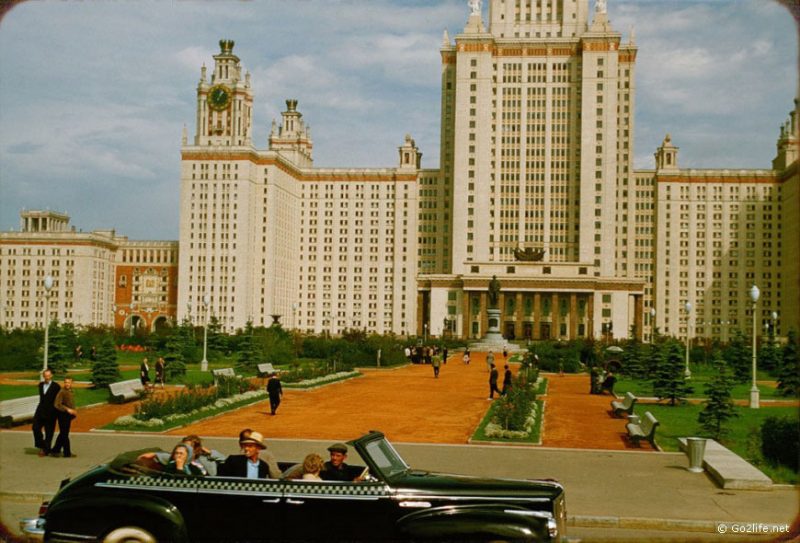
This building had to demonstrate that the Soviet Union recovered from WWII.
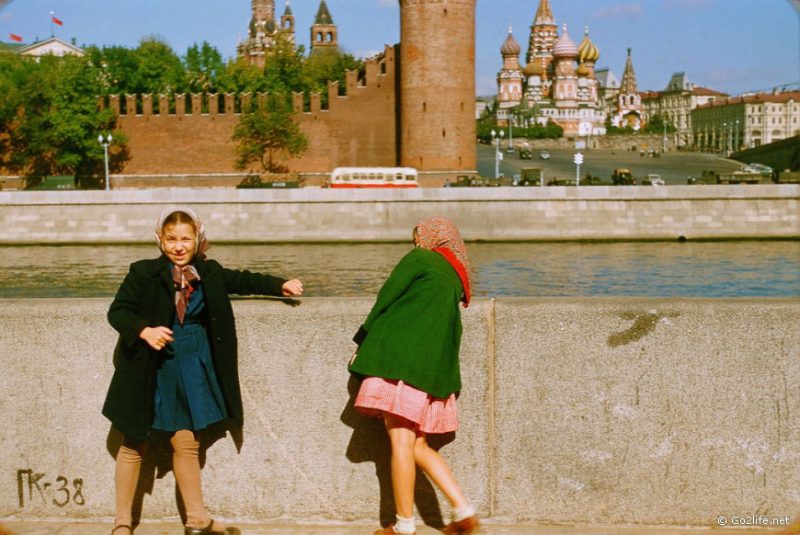
Two soviet girls standing at the Moscow river embankment, the 1950s
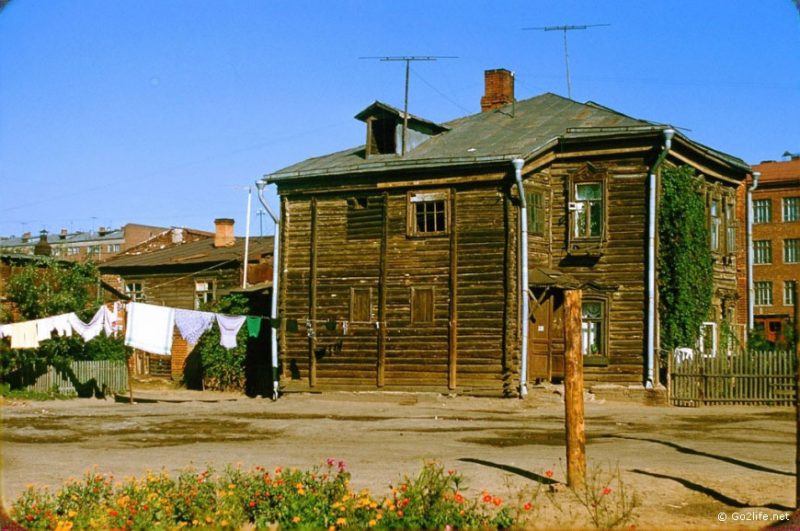
USSR was preparing to send a man to space, while many of the capital’s buildings were still made of wood!
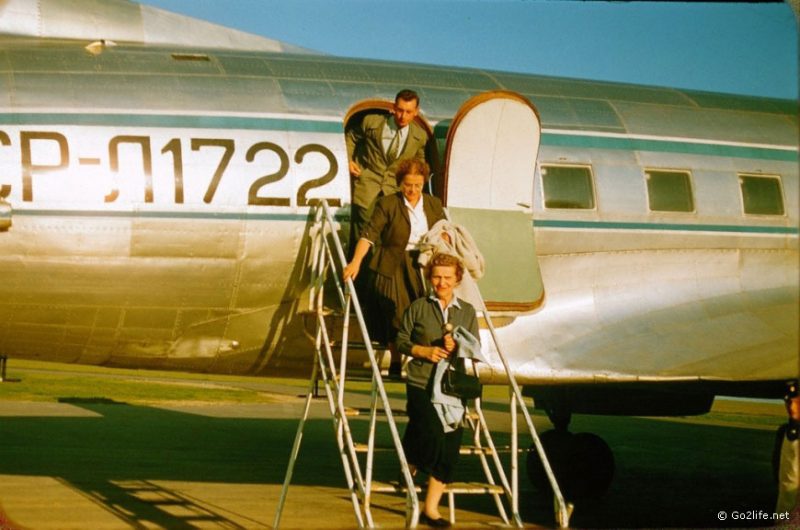
Very few soviet people could afford to travel by plane. Also, there were not so many flight routes in the 1950s
Сообщение Vintage pictures of the Soviet Moscow of the 1950s появились сначала на Old Pictures.
]]>Сообщение Joseph Stalin kisses the sword of Stalingrad, 1943. появились сначала на Old Pictures.
]]>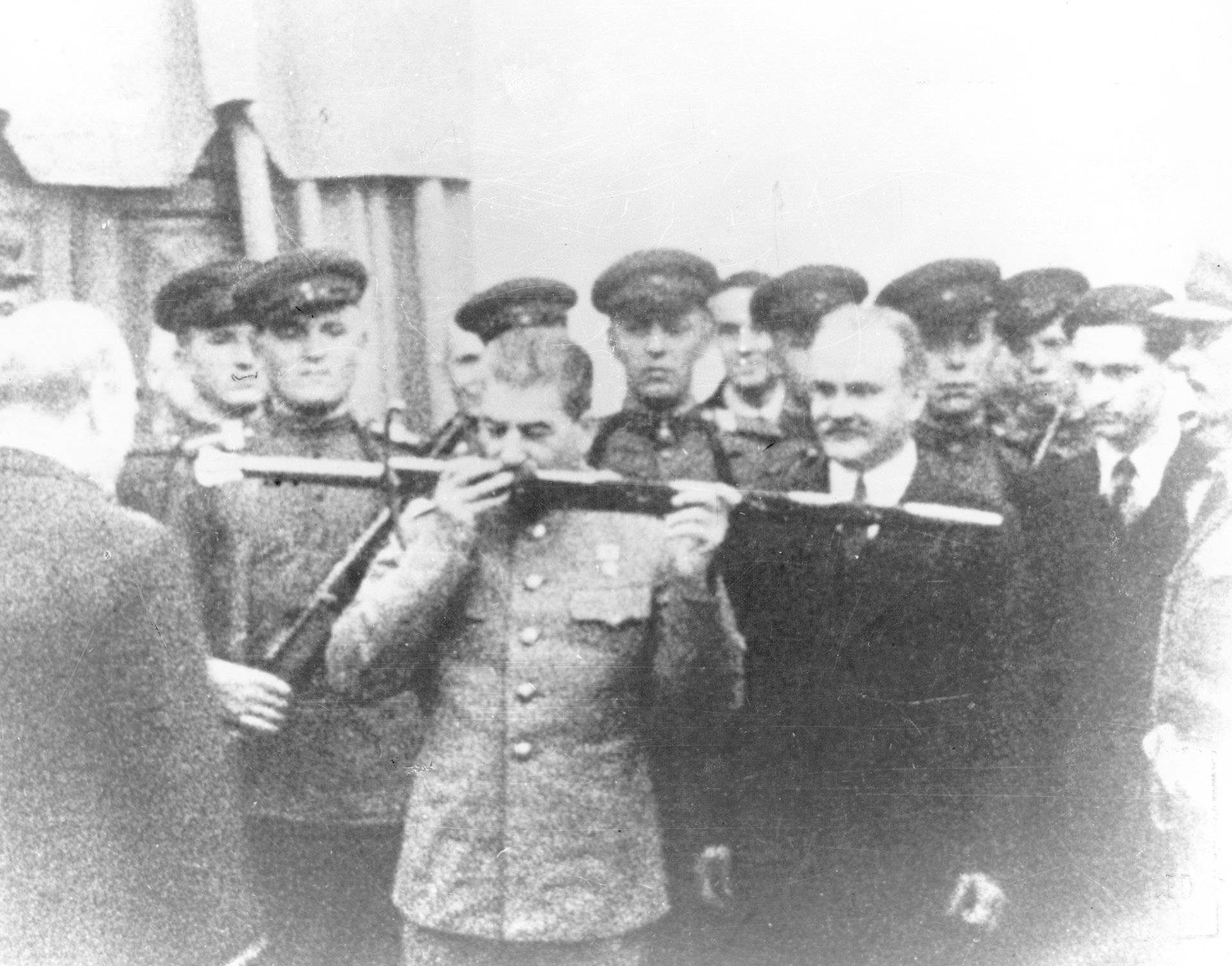 In this picture, Joseph Stalin is receiving the Sword of Stalingrad during the Tehran conference in 1943.
In this picture, Joseph Stalin is receiving the Sword of Stalingrad during the Tehran conference in 1943.
The story of the Sword of Stalingrad
We know that King George VI of England wanted to honor the Soviet people’s victory in Stalingrad’s Battle. We also know that it was Winston Churchill’s idea, and he had a good experience of boosting morale in WWII. Actually, the prime minister presented the Sword of Stalingrad to Supreme Commander-in-Chief Stalin in President Roosevelt’s presence.
According to legend, Stalin unexpectedly handed the sword over to Voroshilov, and he dropped it. According to another legend, Stalin himself dropped the sword. Today, the blade adorns the Museum of the Battle of Stalingrad in Volgograd.
The historical video from the event is here.
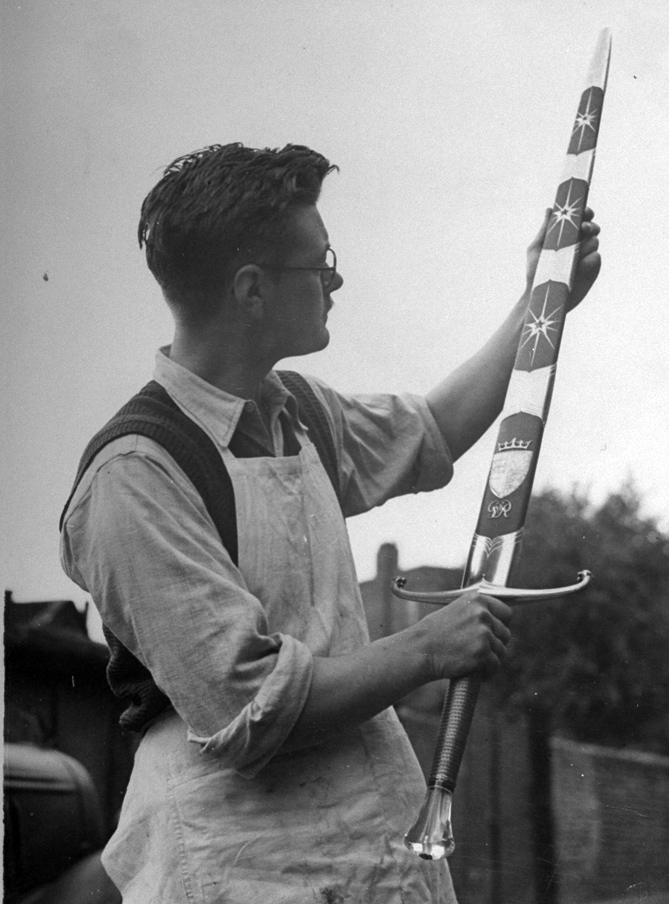
Forging the sword.
Glorious blade
The Sword of Stalingrad is 122 cm long, and it was forged of Sheffield steel. There is an inscription on the blade: “To the people of Stalingrad, strong as steel, from King George VI as a sign of deep admiration for the British people.” The sword hilt is plated with 18-karat gold. The scabbard is crimson, sewn from the red broadtail.
Wilkinson Sword Company accomplished the design of the Sword of Stalingrad and forged it in three months. The model is similar to Crusader’s double-edged two-hand sword.
Read more: 100 most important pictures in history
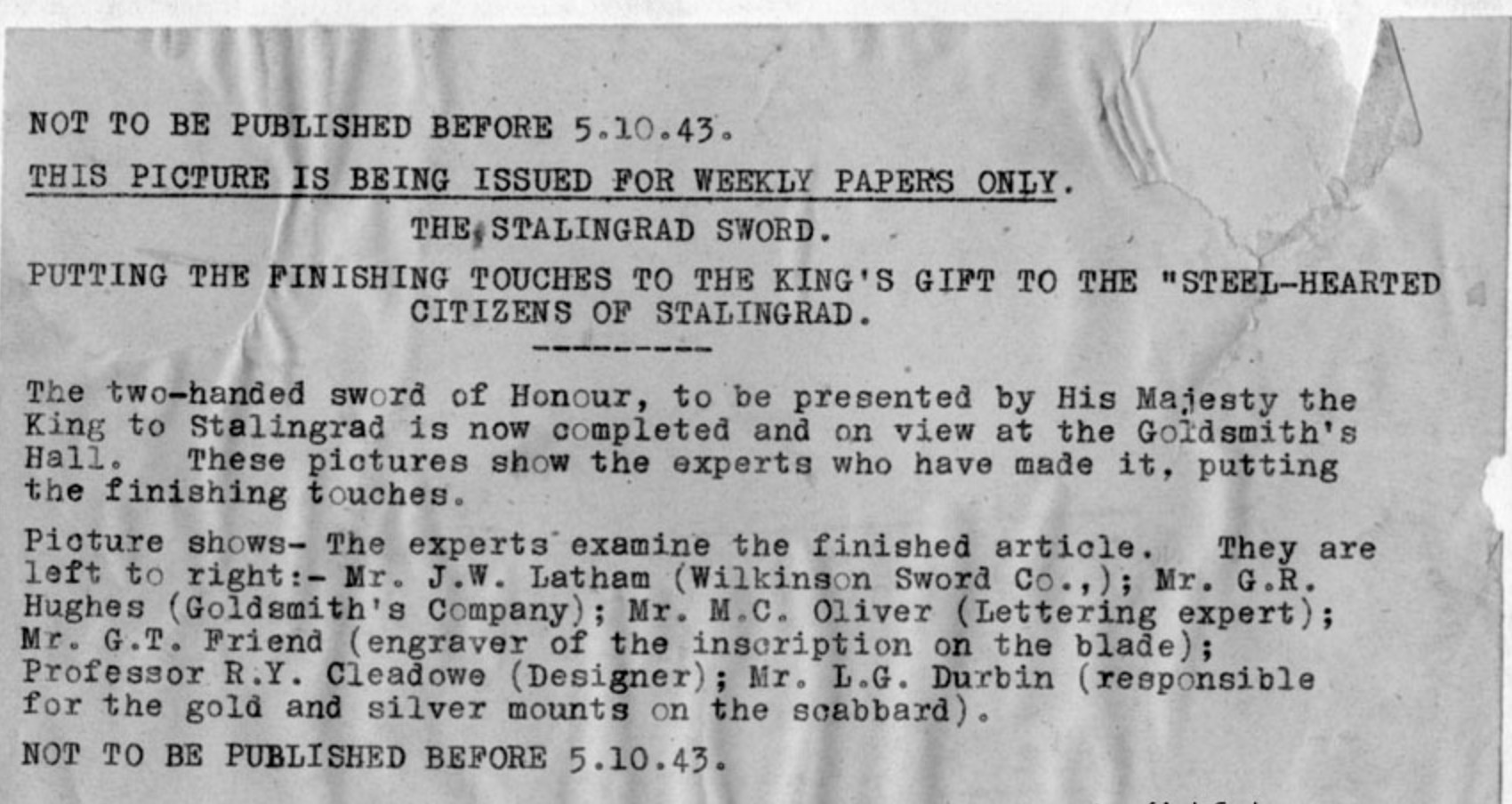
British commanders even prepared a text for the pictures of the sword.
Why the Battle of Stalingrad was so important
Winston Churchill perfectly knew how important the battle of Stalingrad was. Stalin and the Russian army suffered heavy losses in 1941, and they wanted a comeback. And the Battle of Stalingrad was the most important fight of 1942, and it was the tipping point in WWII. The battle lasted for two hundred days.
The Soviet command didn’t expect the Nazis to attack the Stalingrad. They were enforcing the Moscow defenses, waiting for the second attempt to capture the capital. Nazi plans were different. German forces wanted to cut the Red Army off the oil from the Caucasus. Russians managed to encircle the German army at Stalingrad. The Soviets captured or killed around 750 000 germans.
Сообщение Joseph Stalin kisses the sword of Stalingrad, 1943. появились сначала на Old Pictures.
]]>